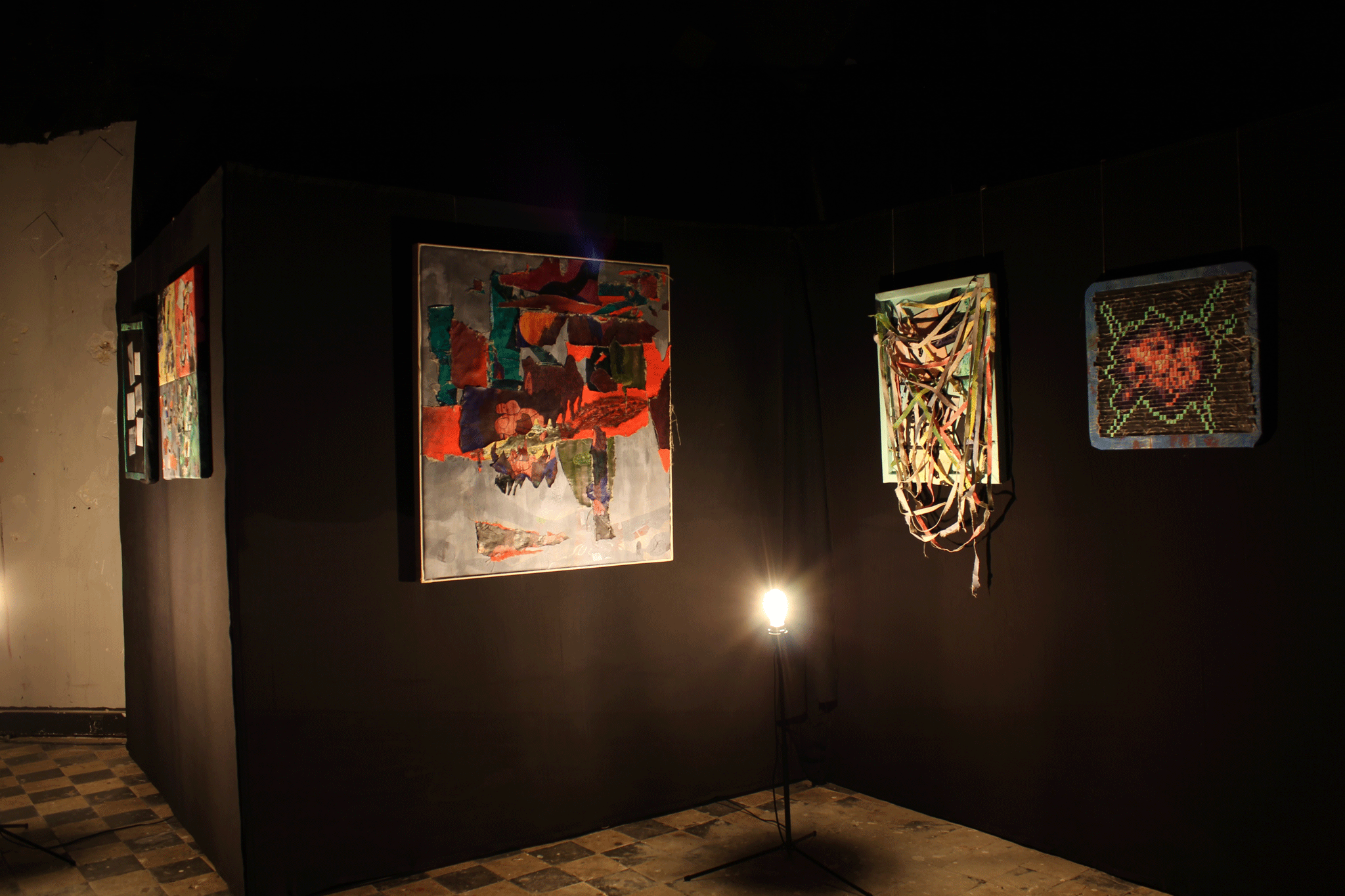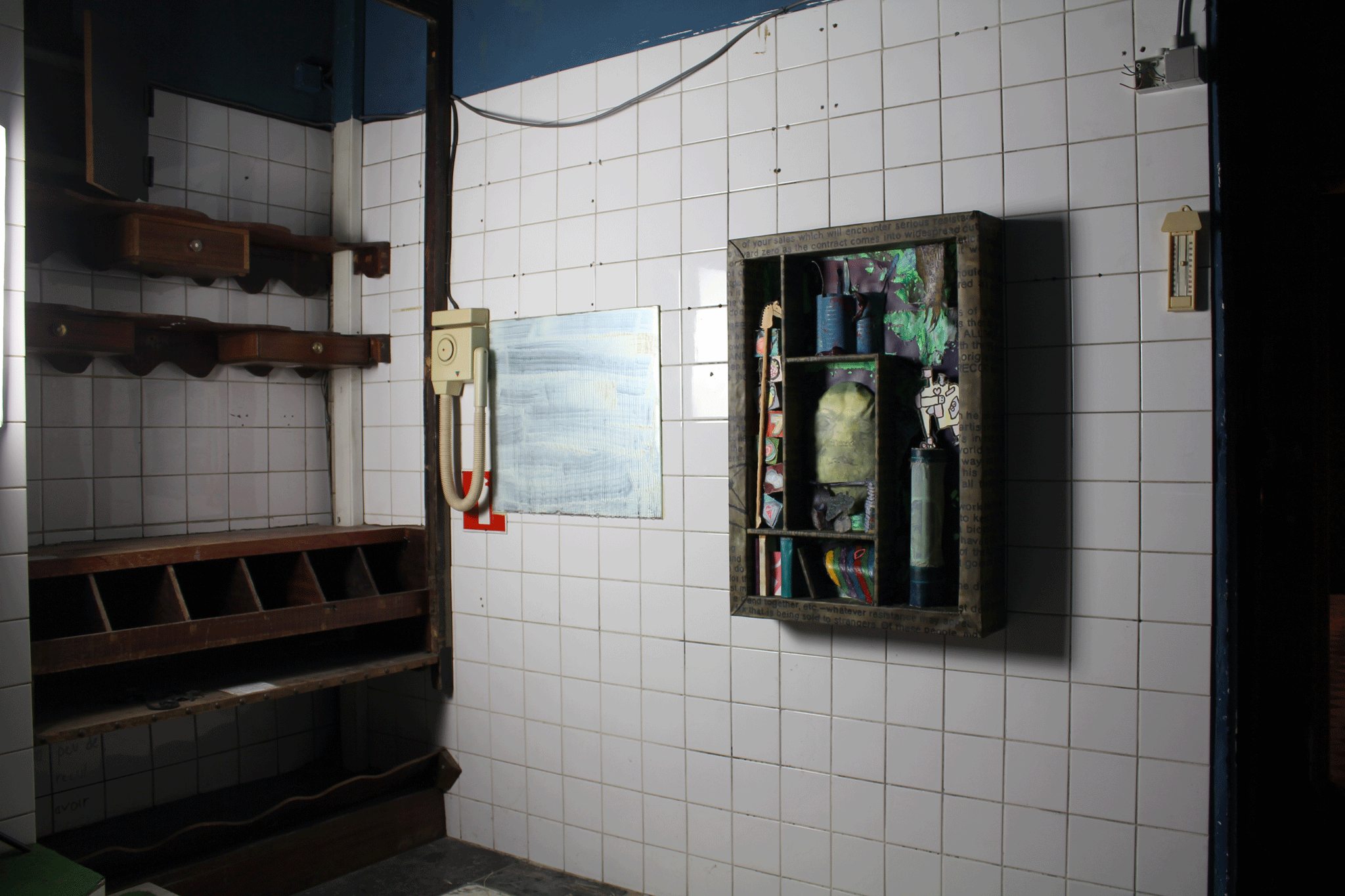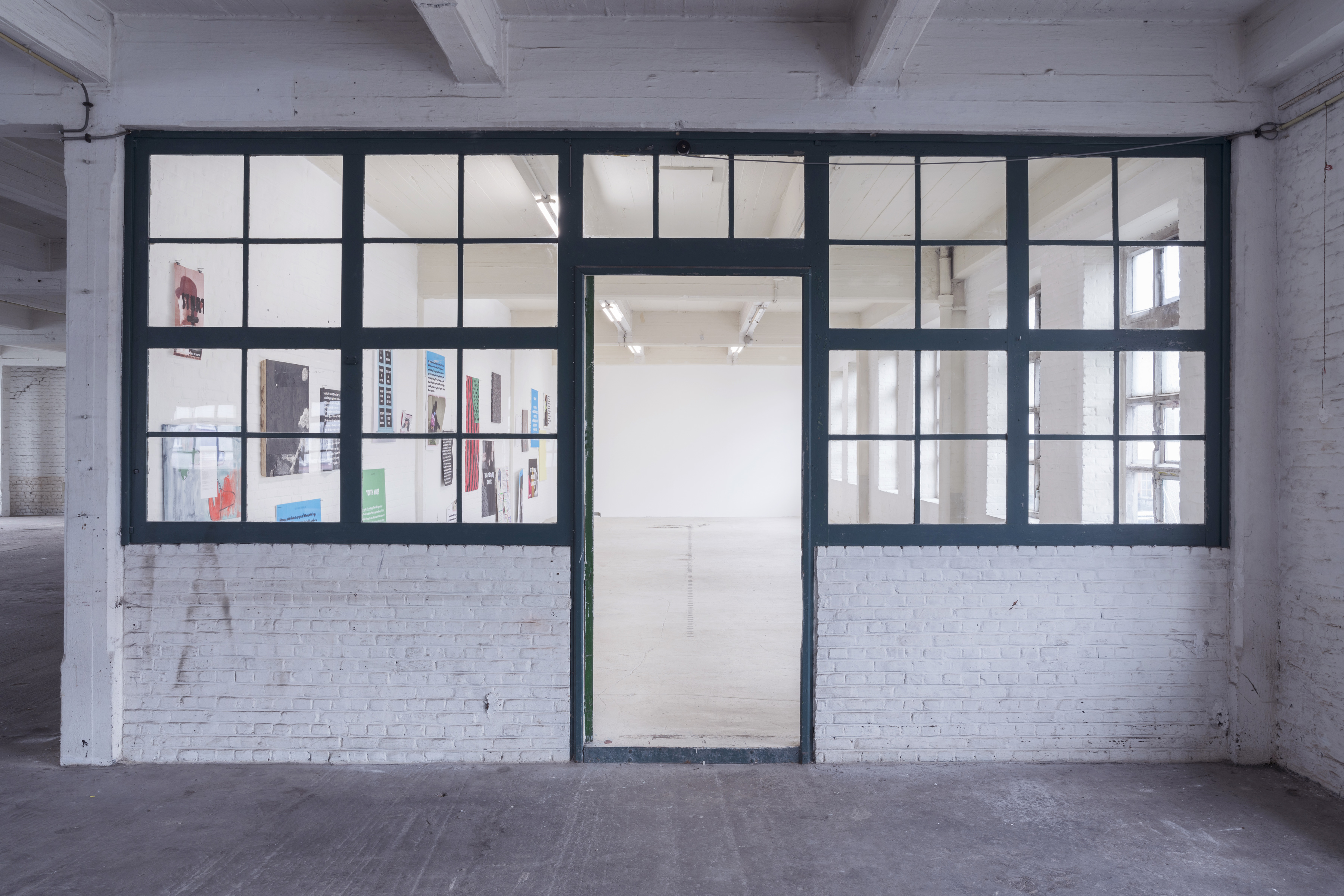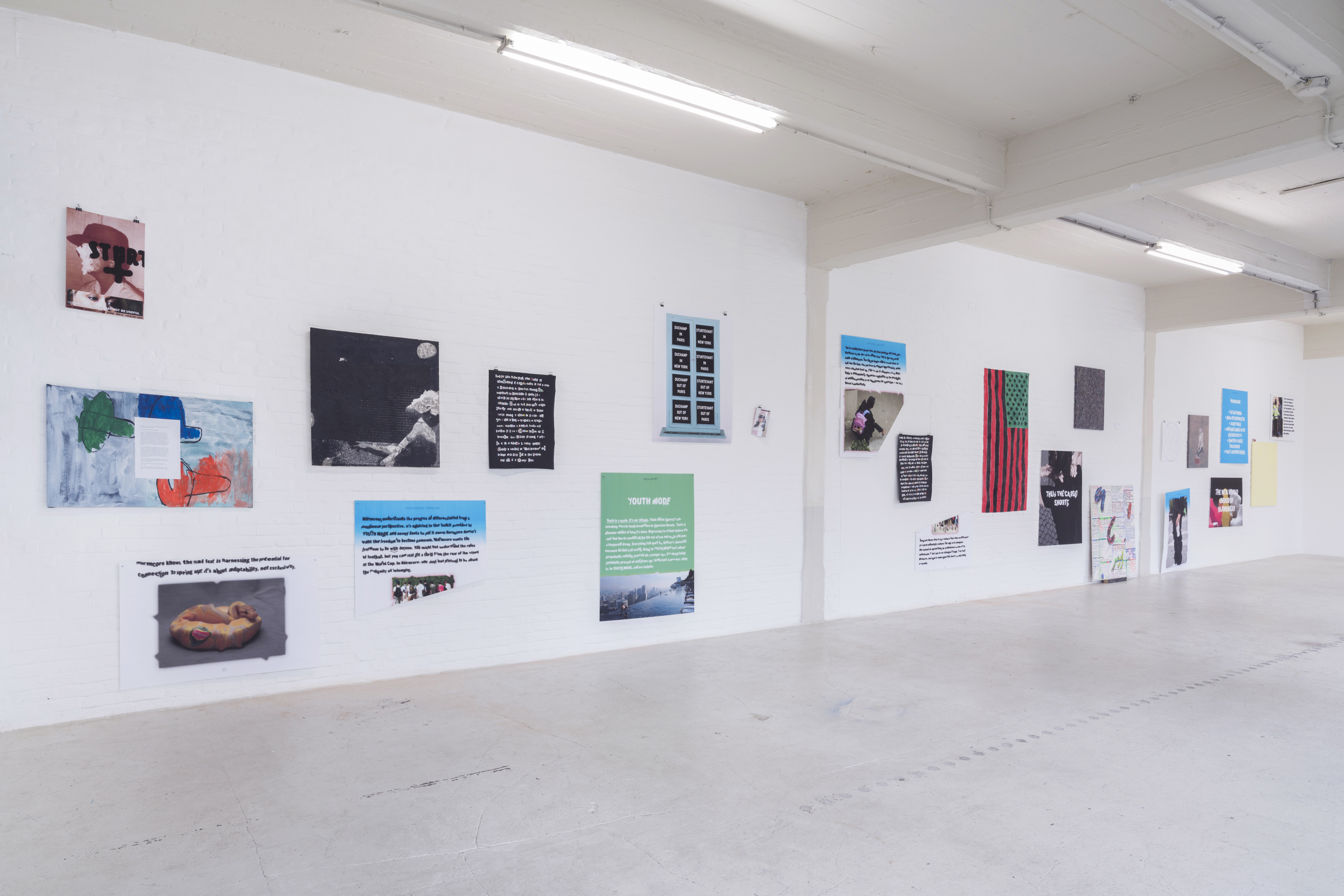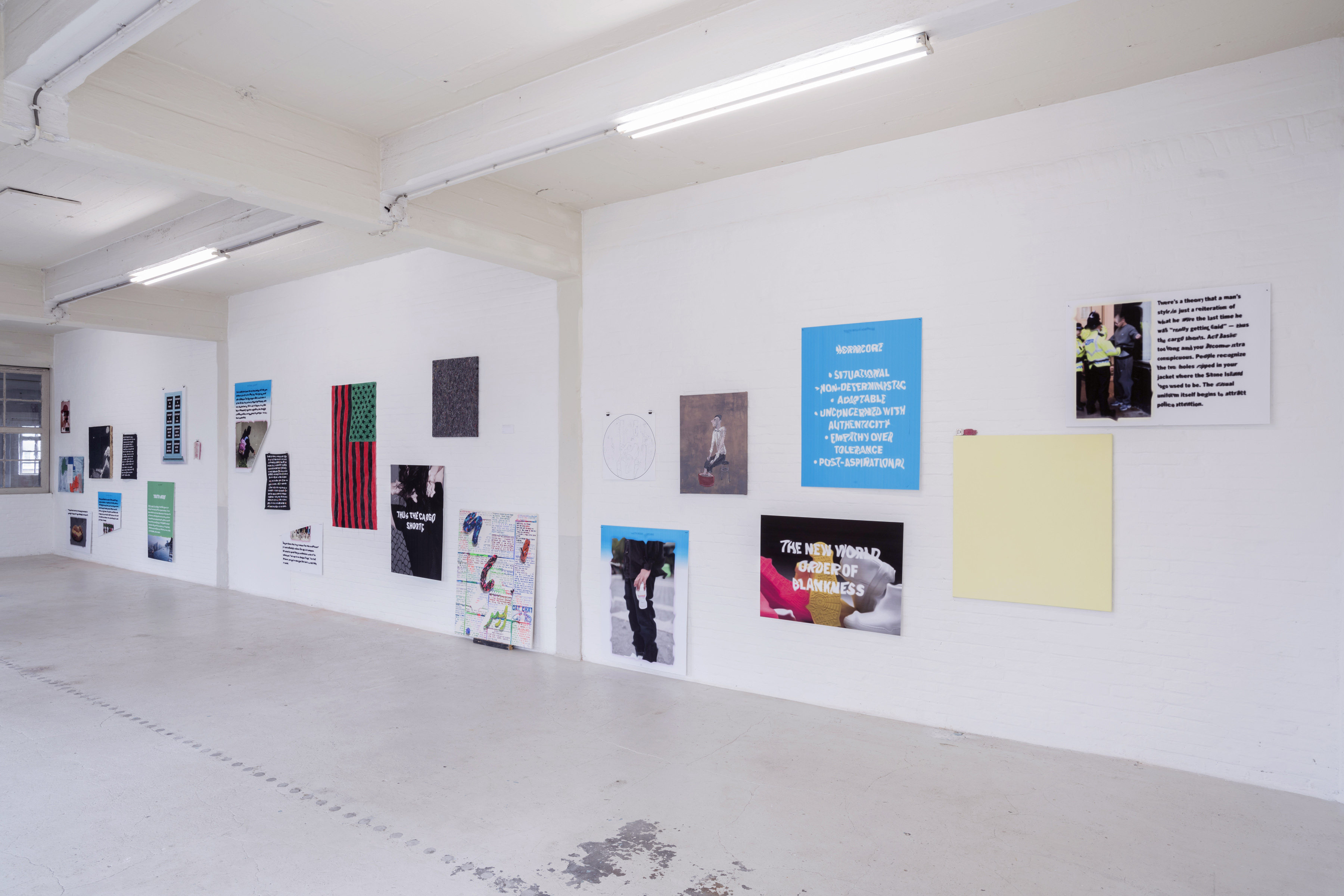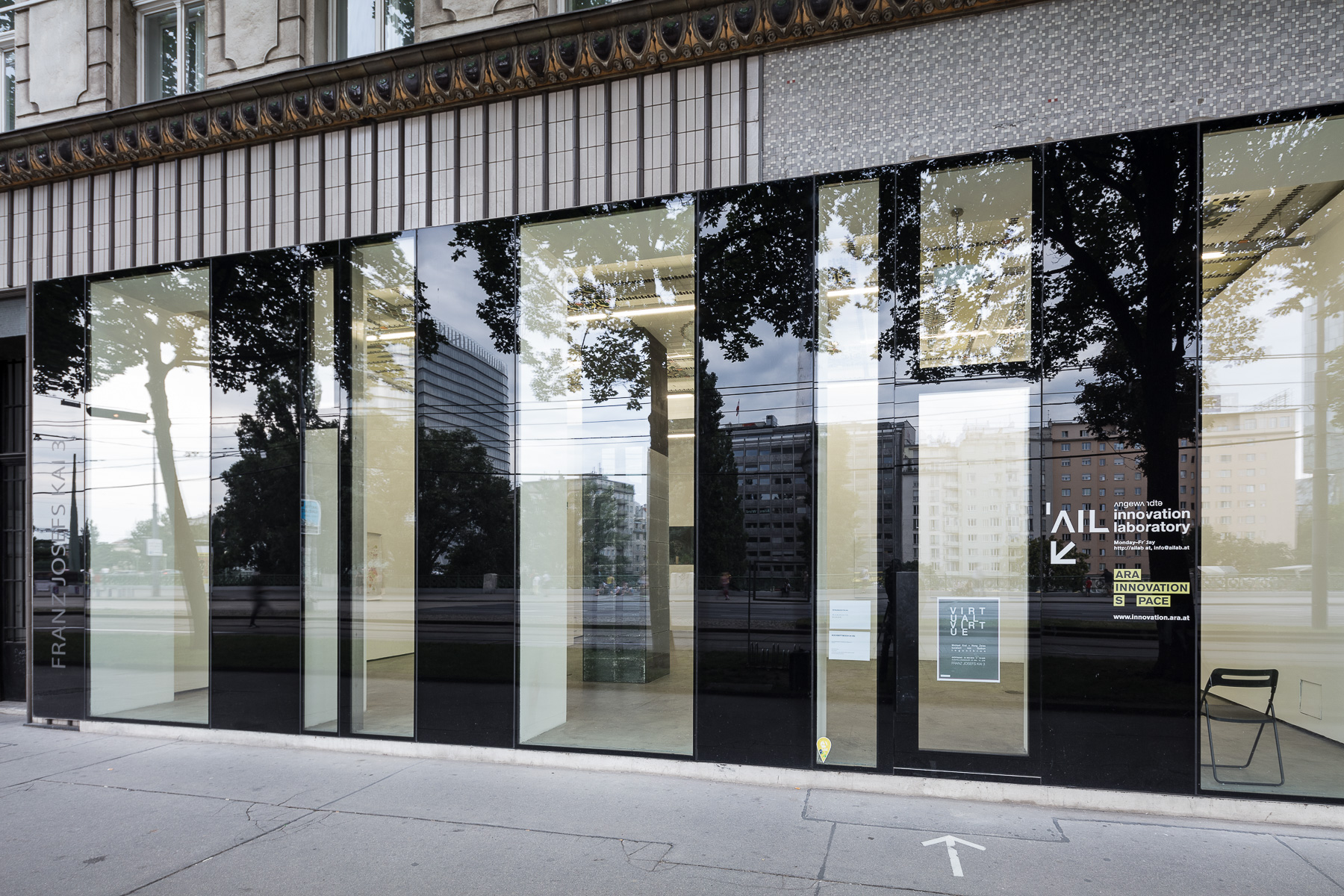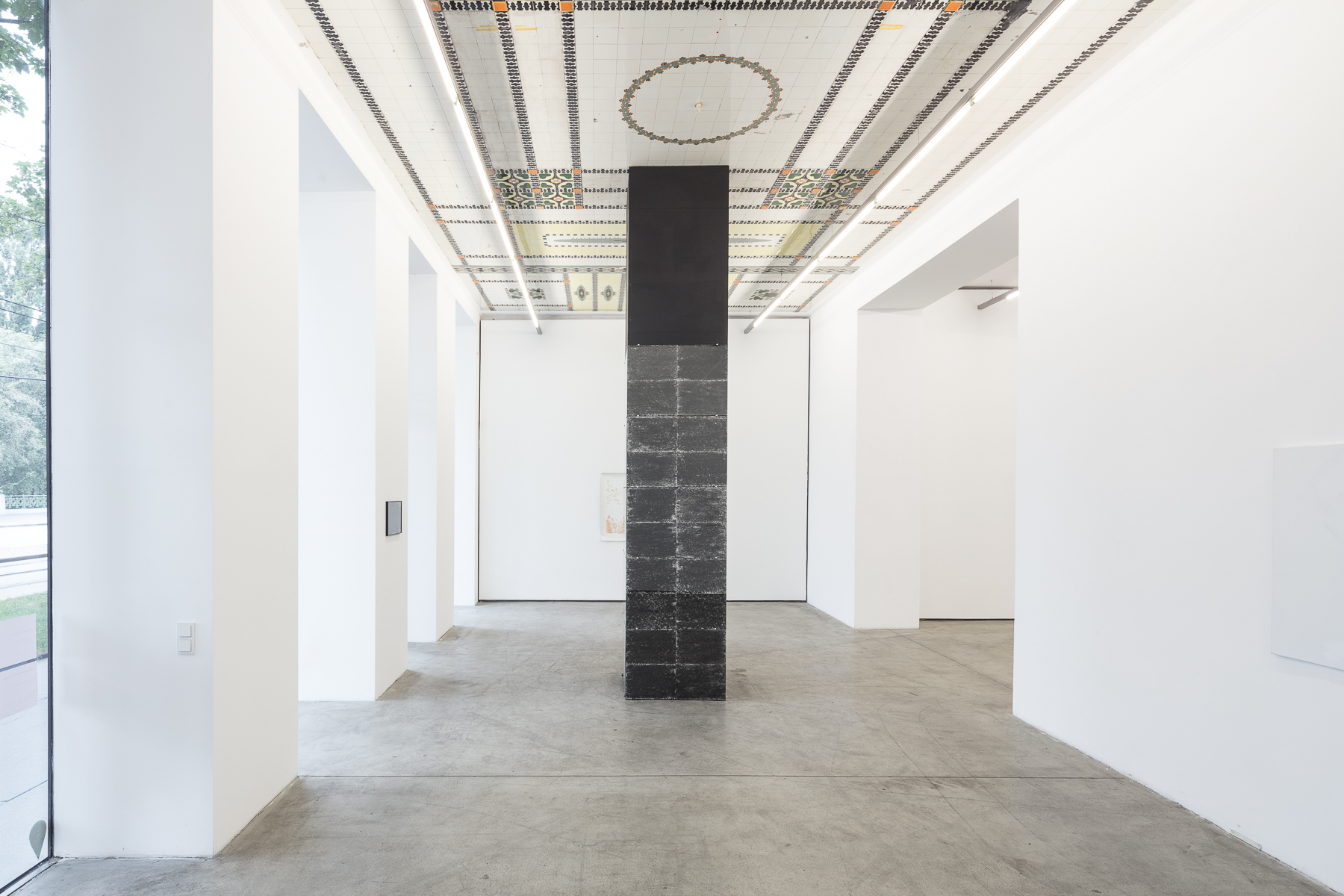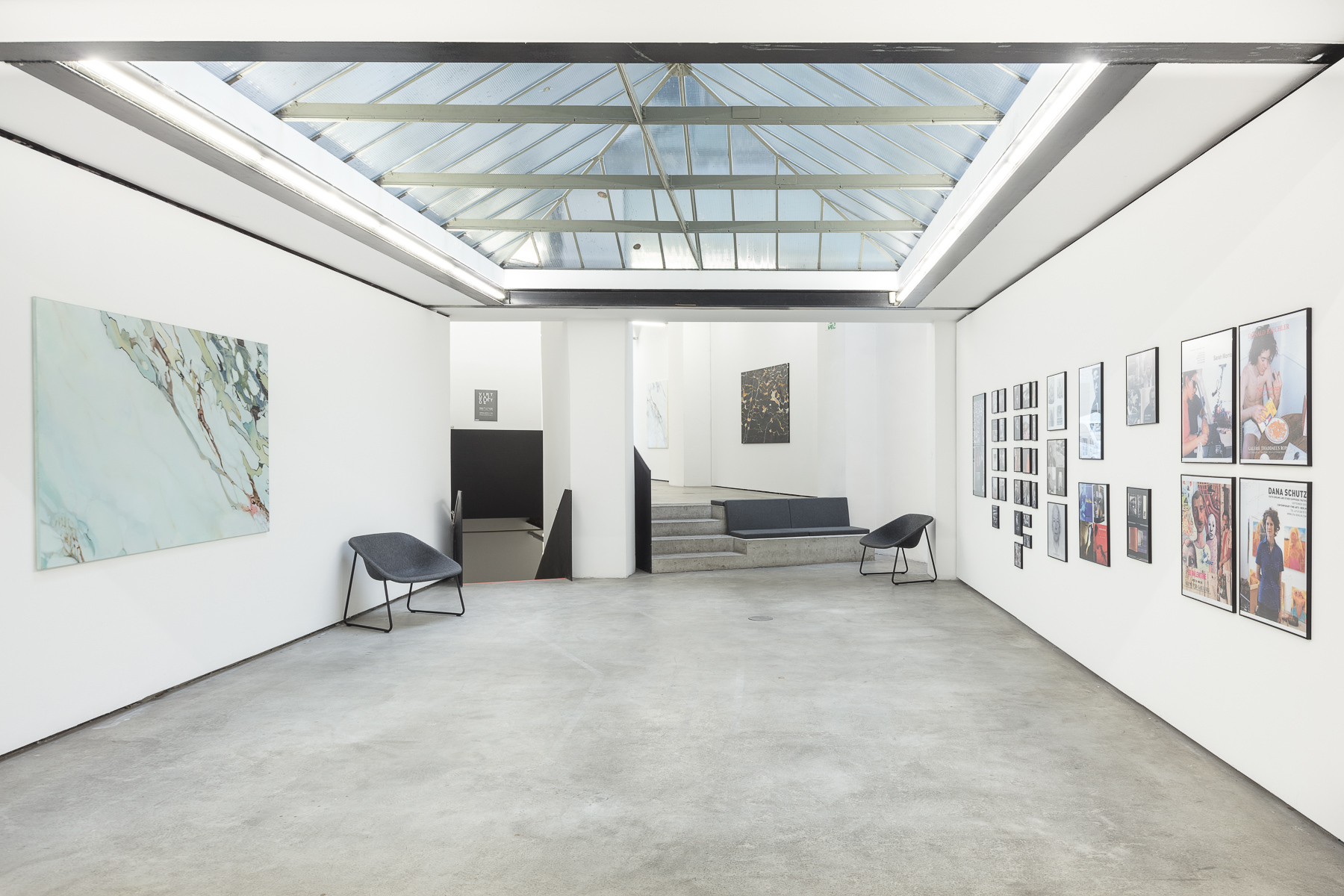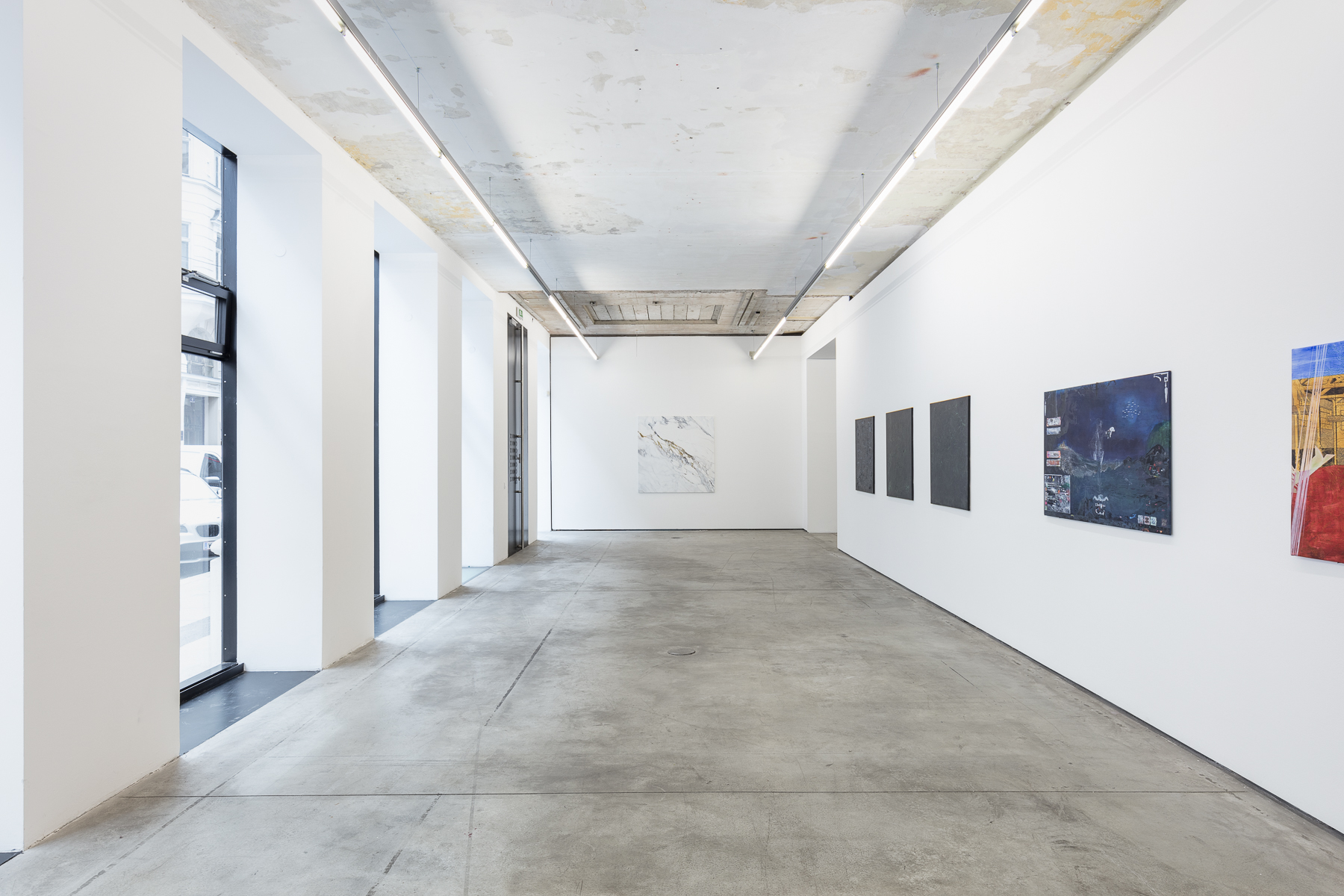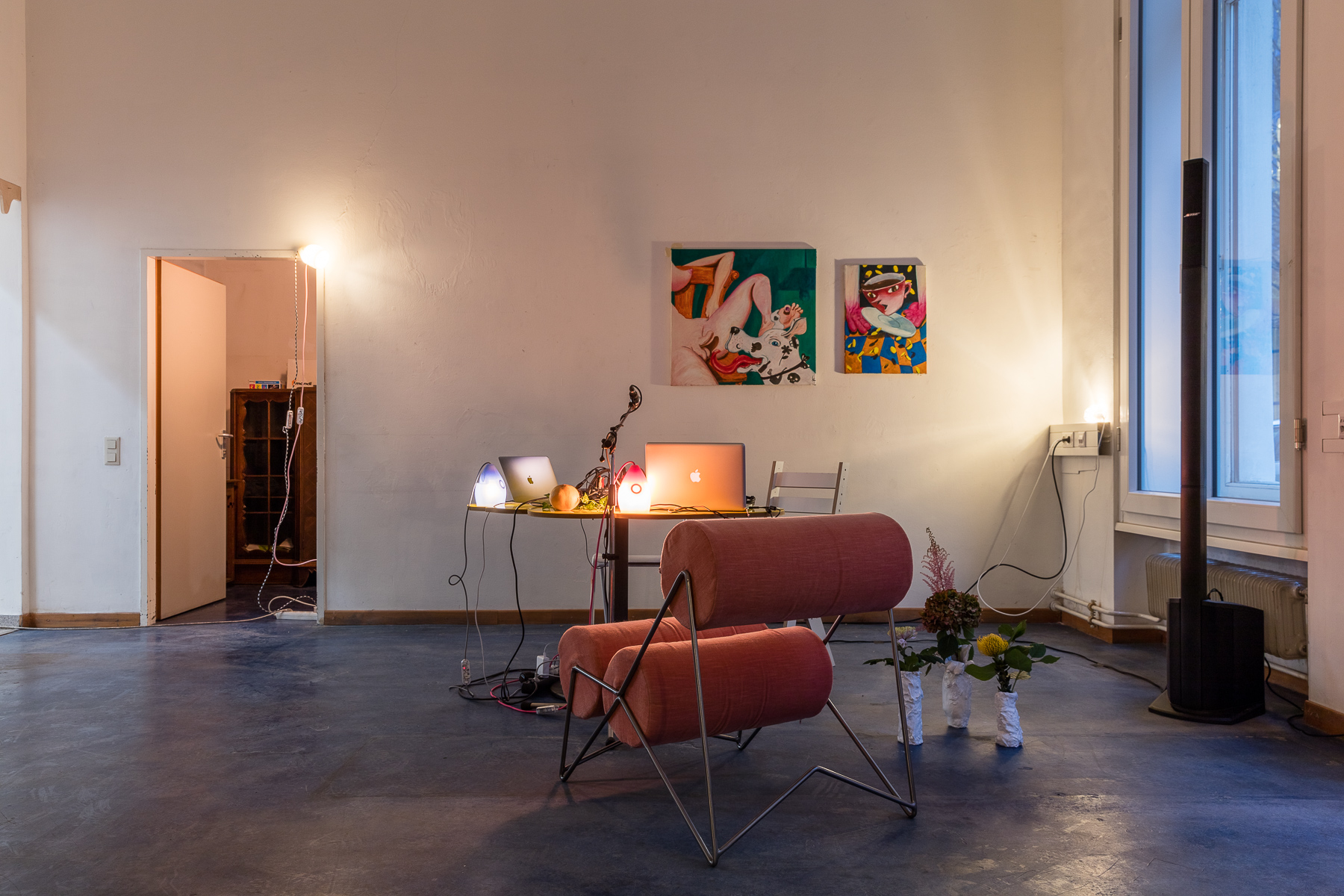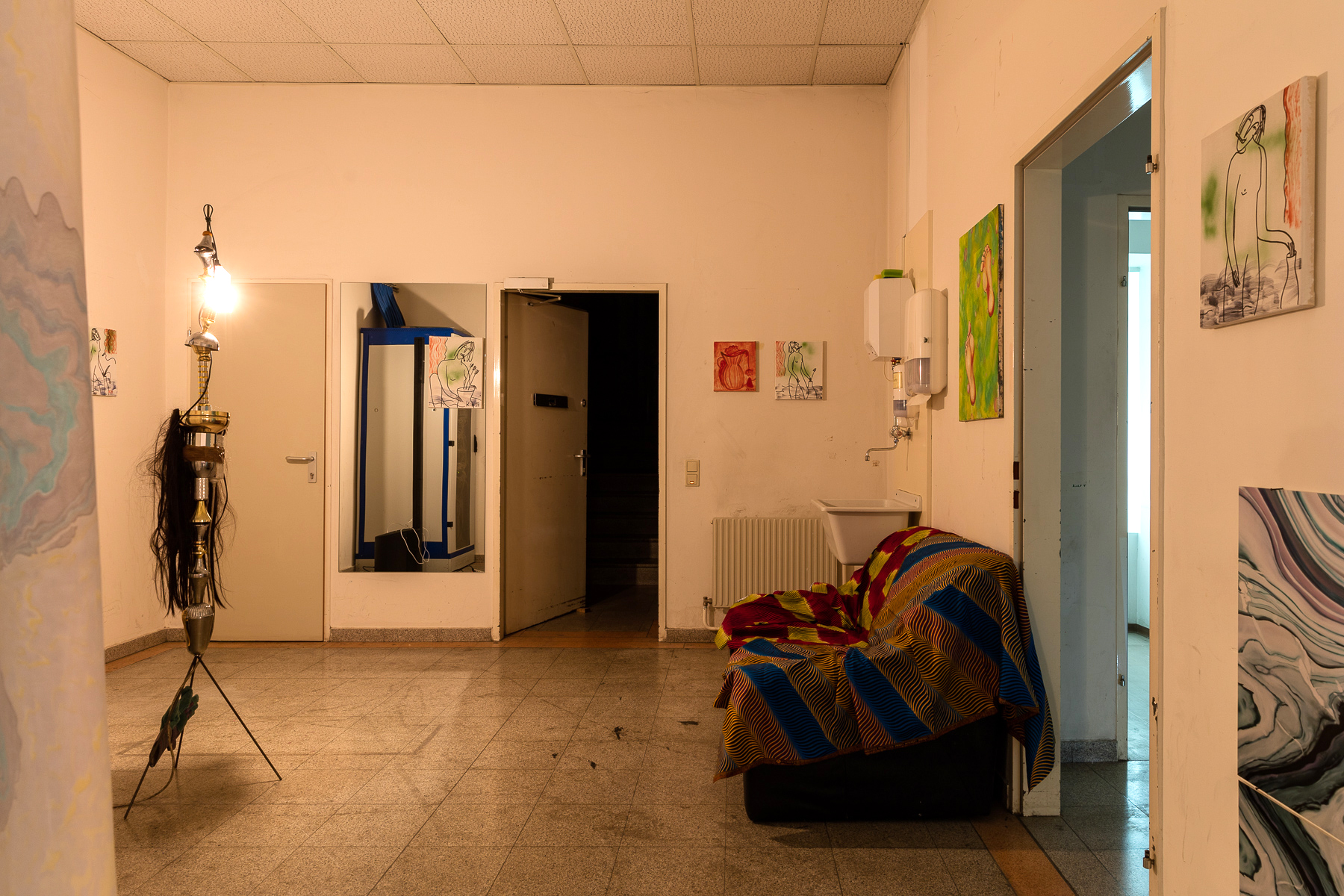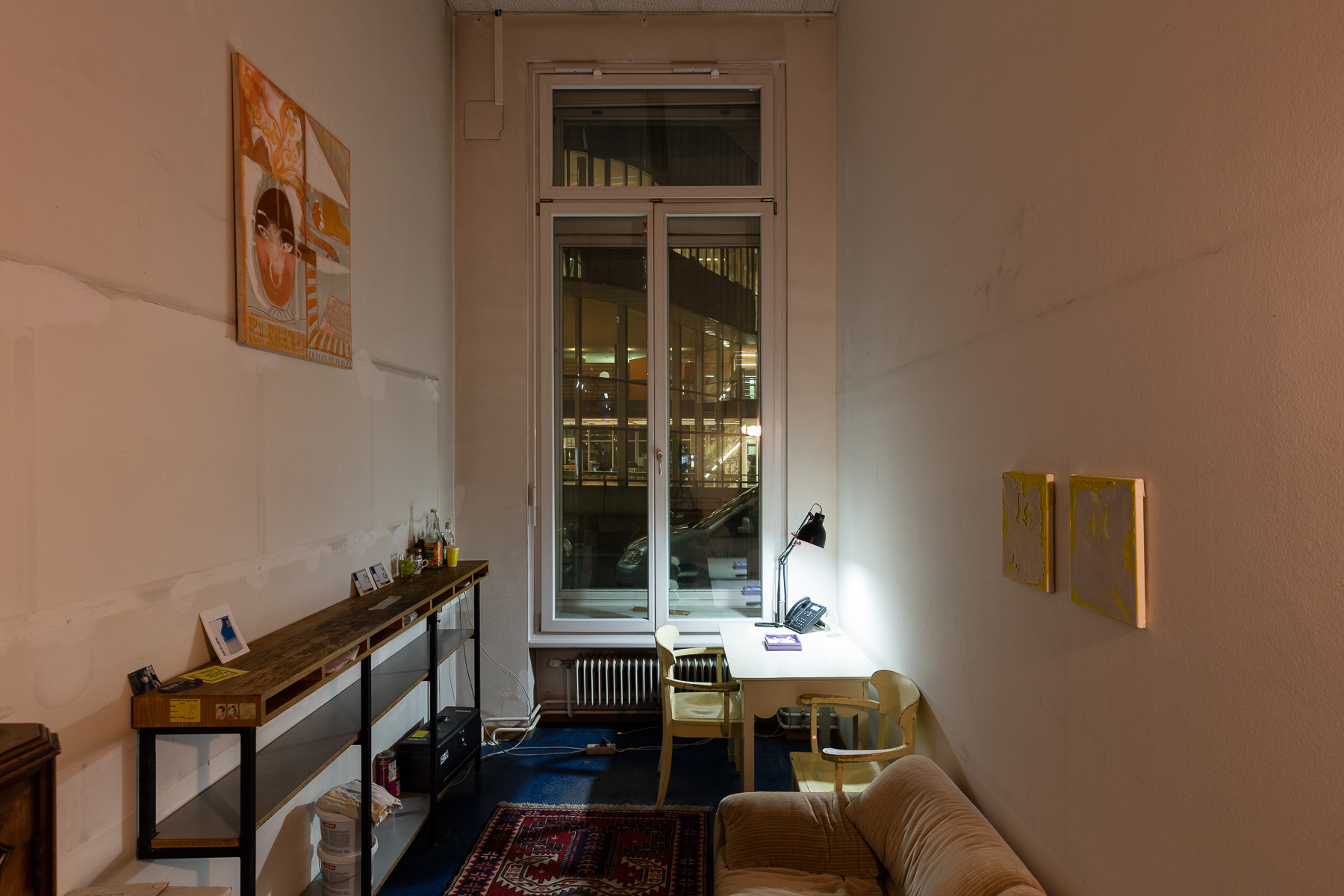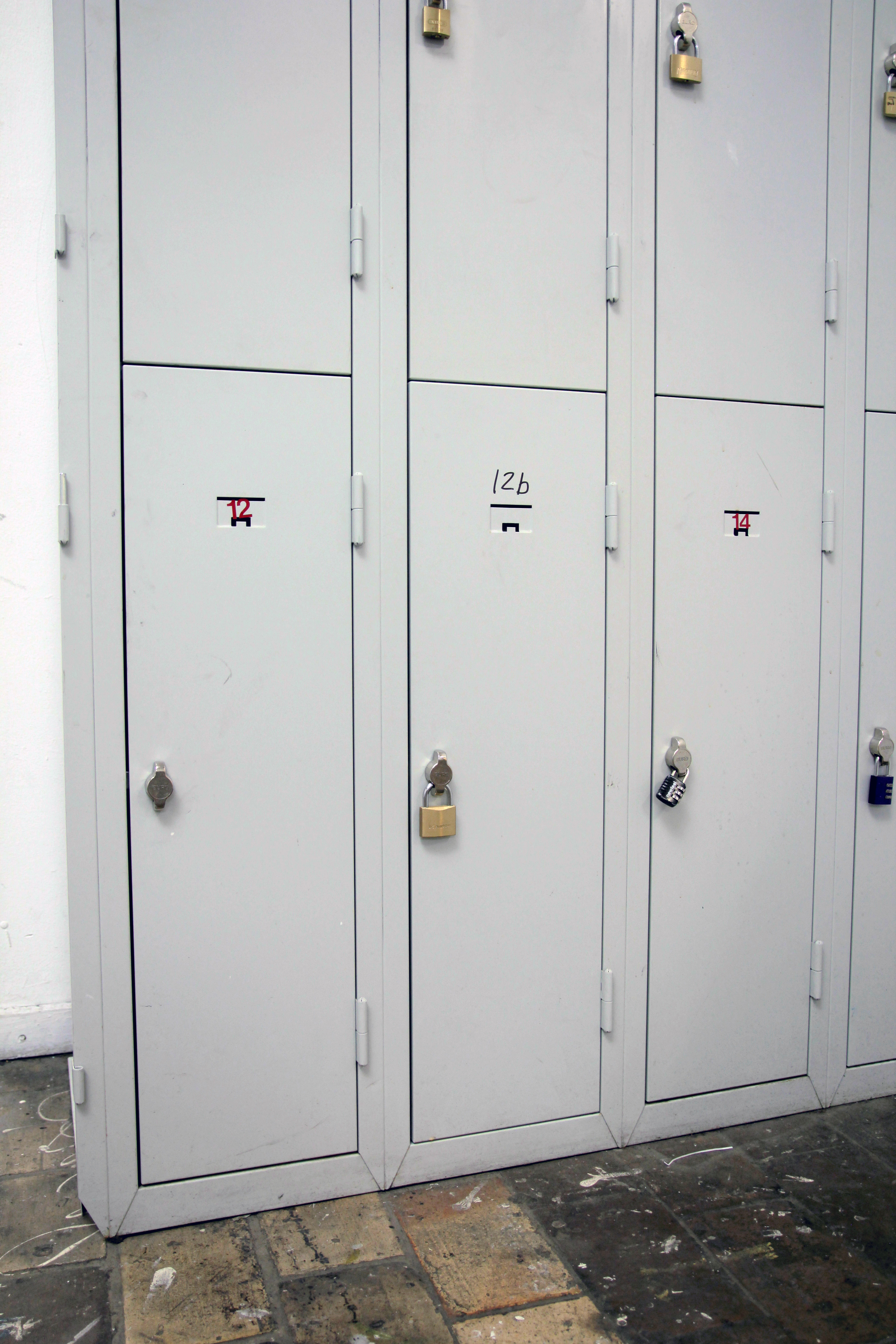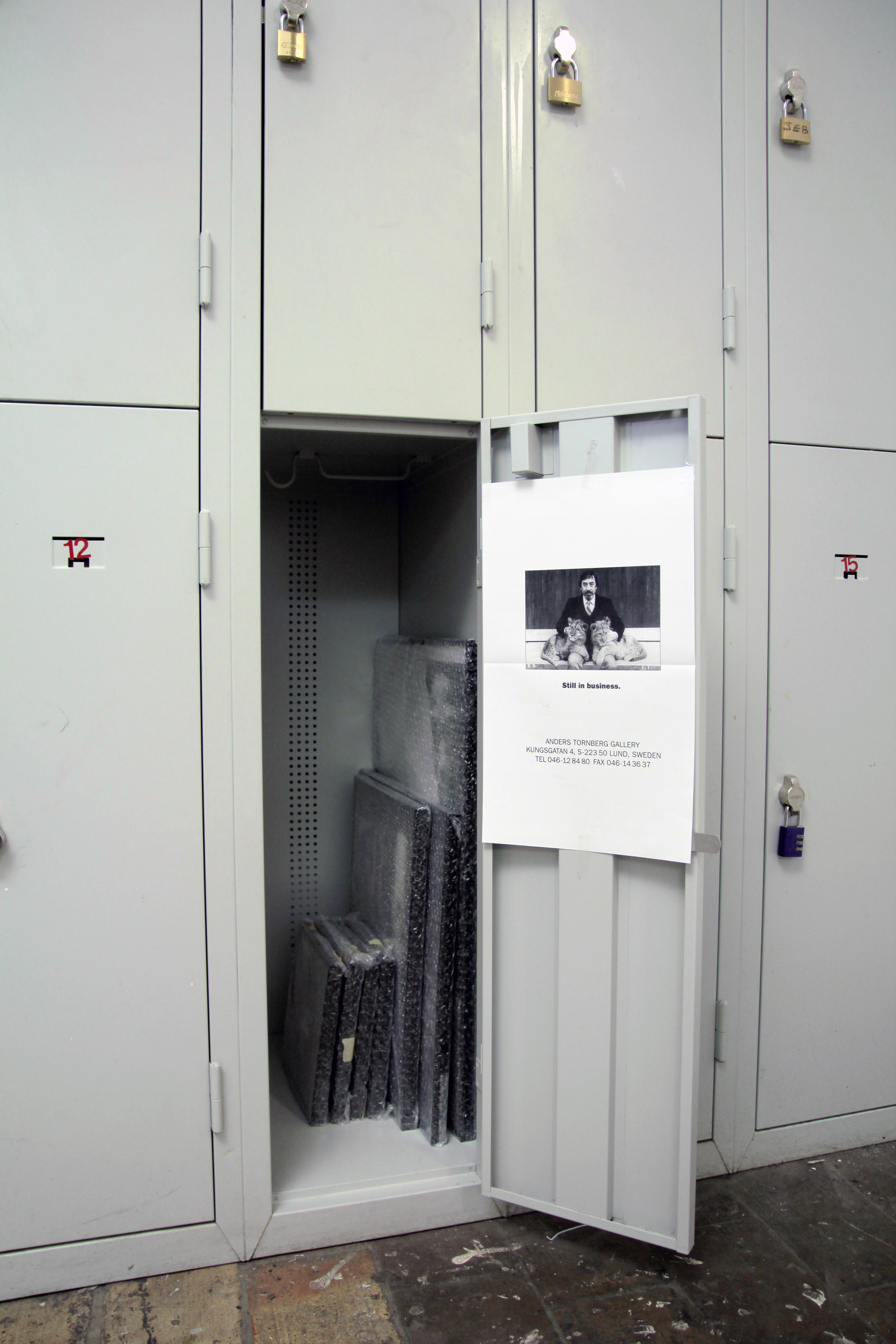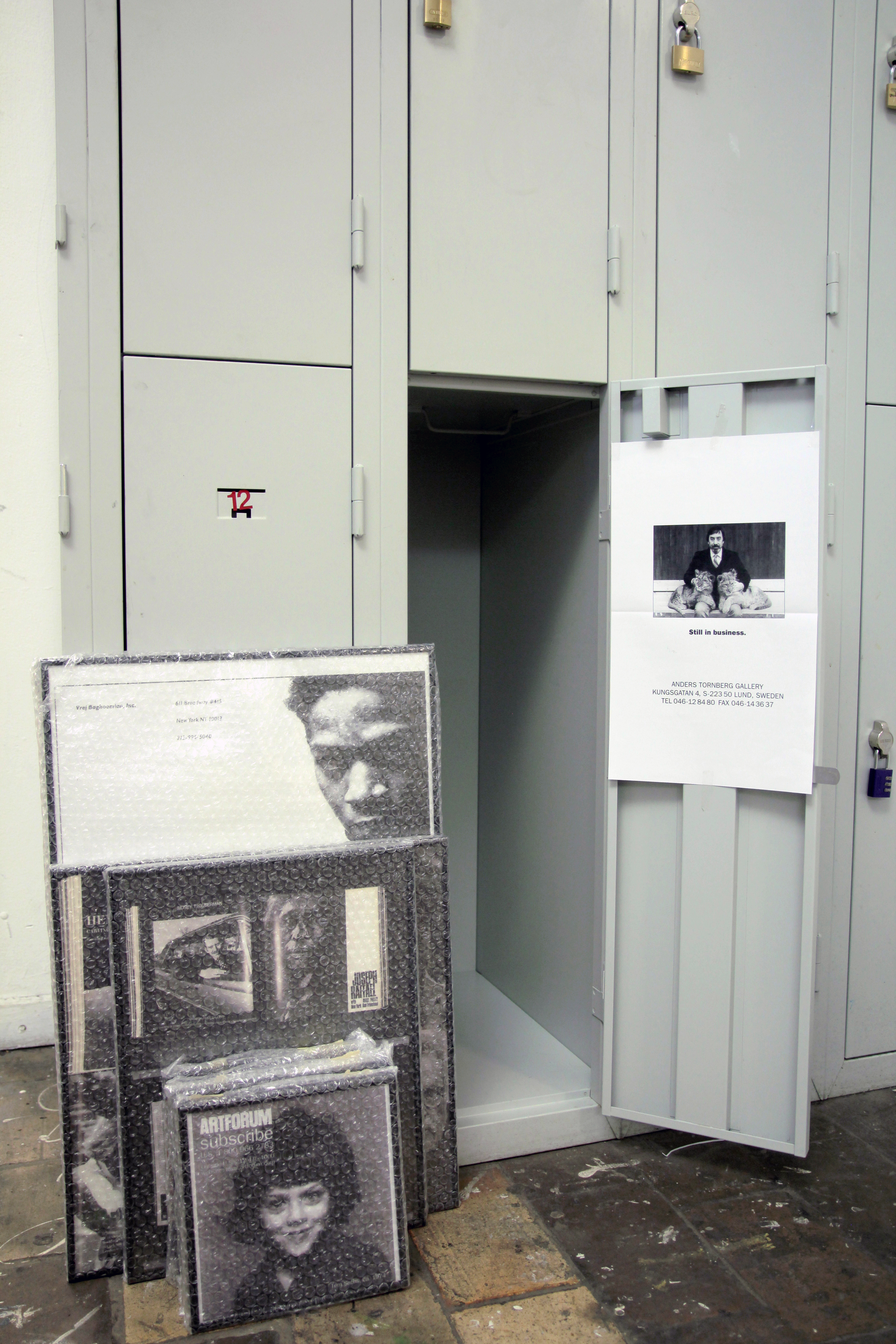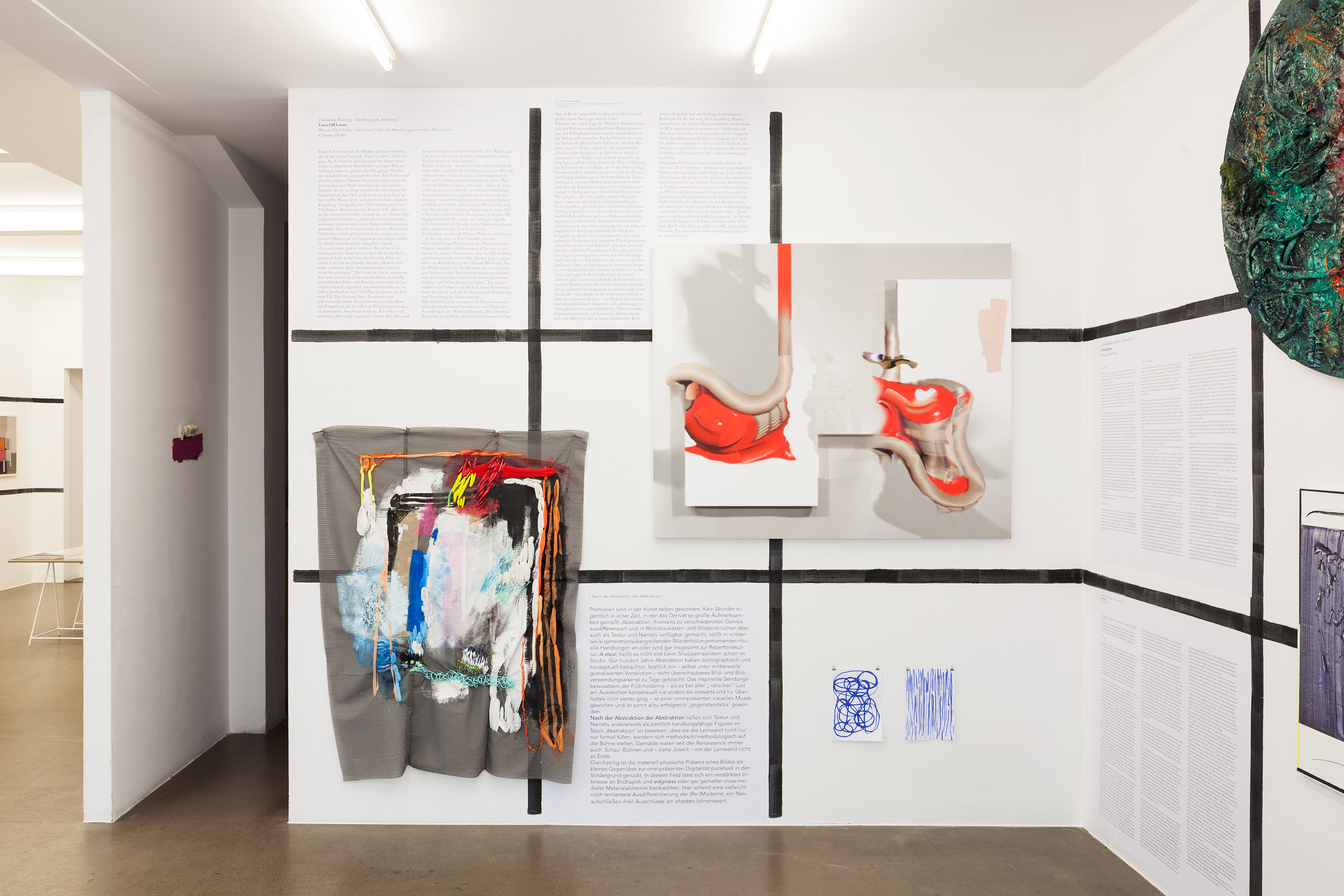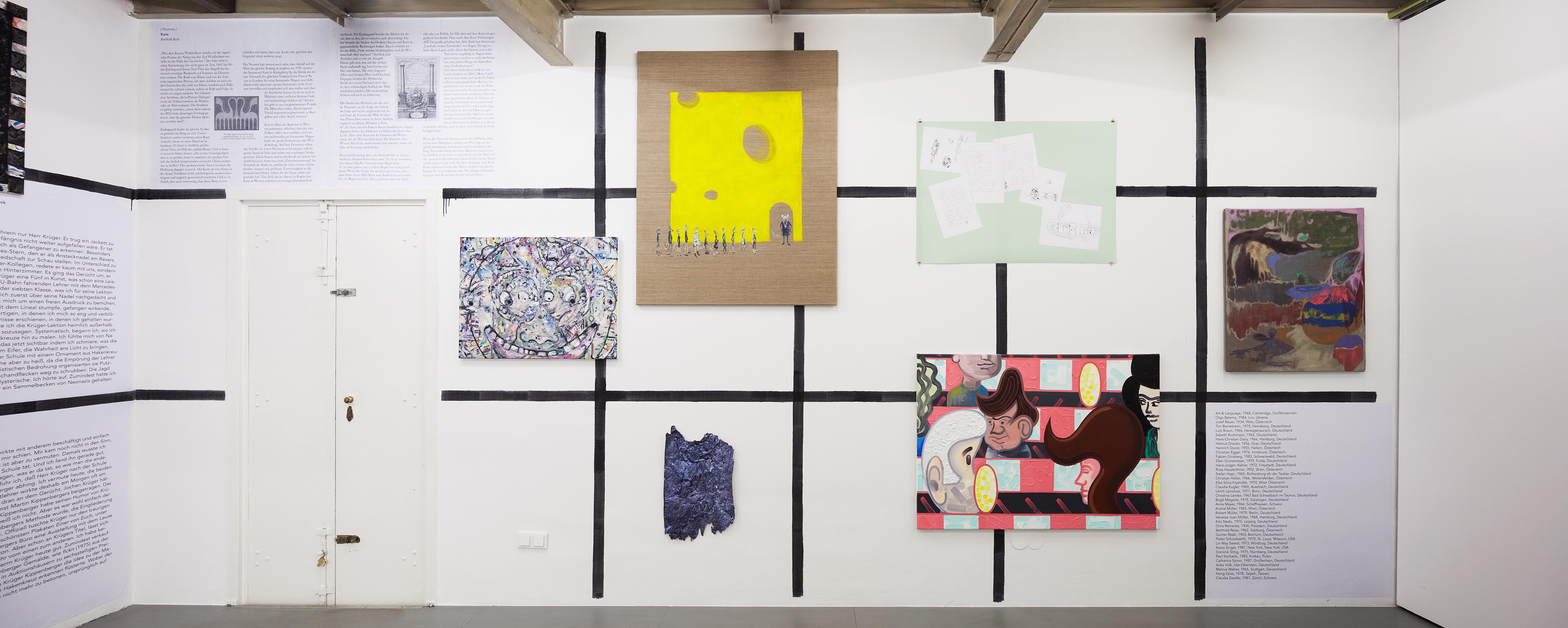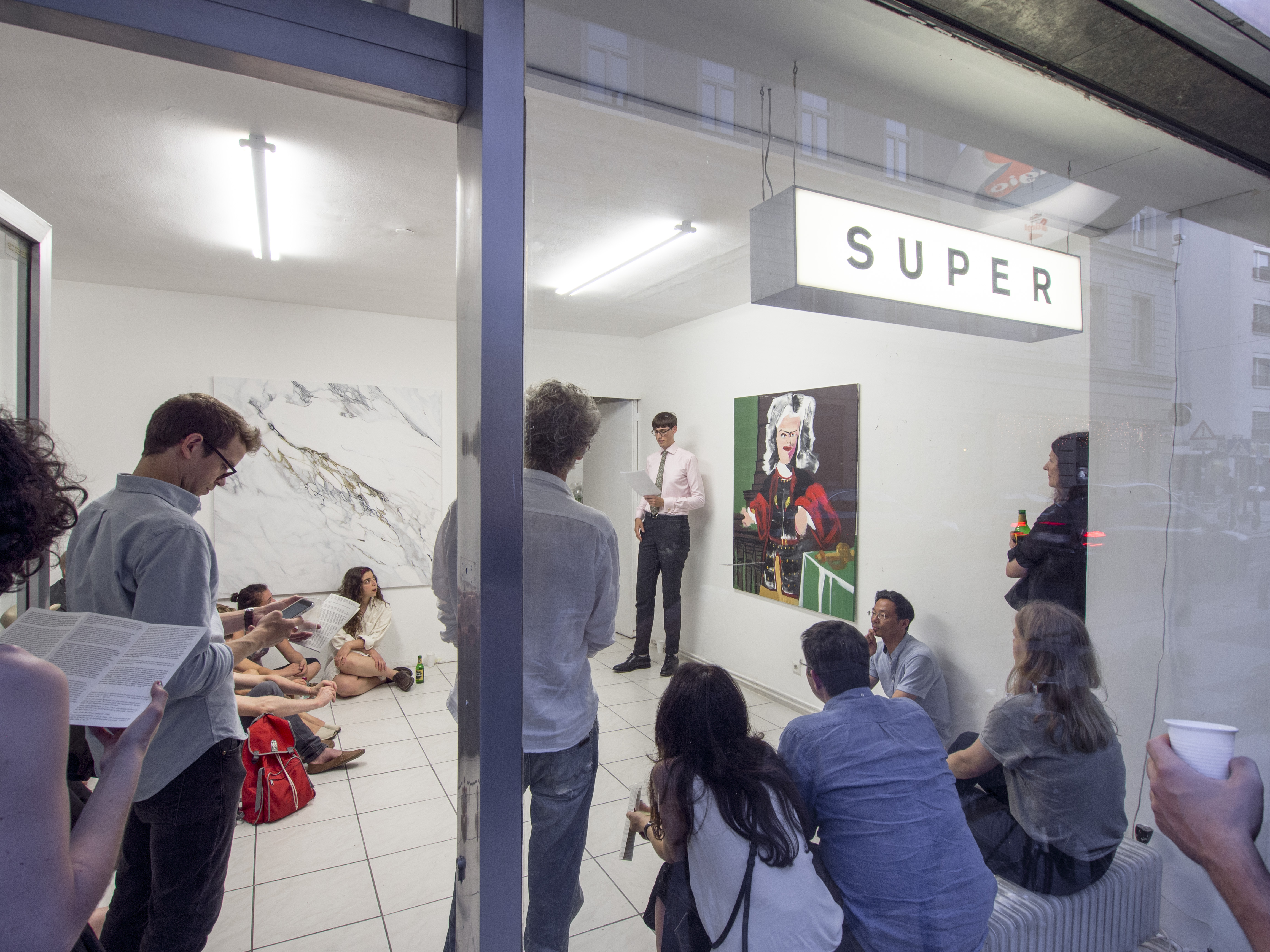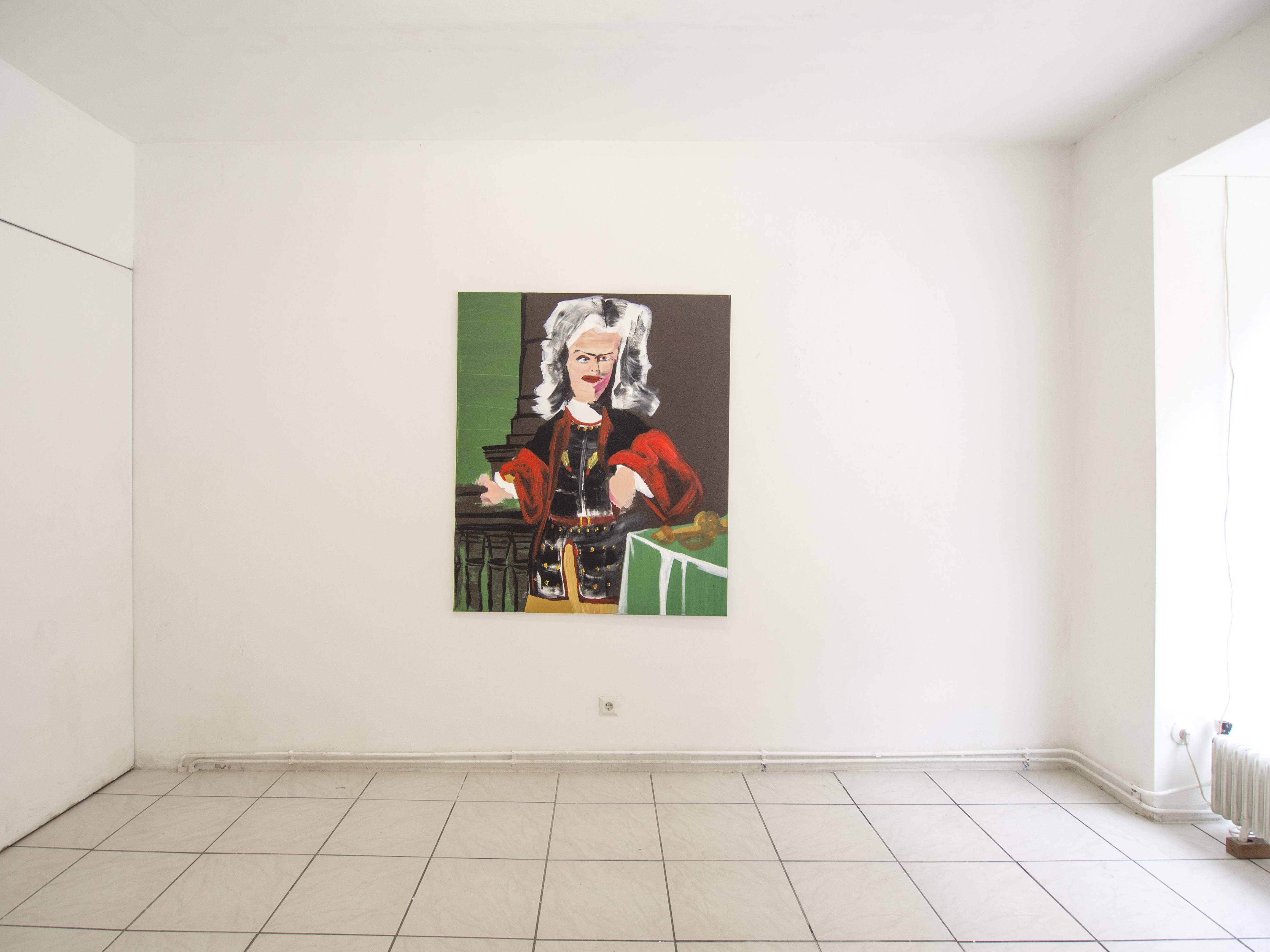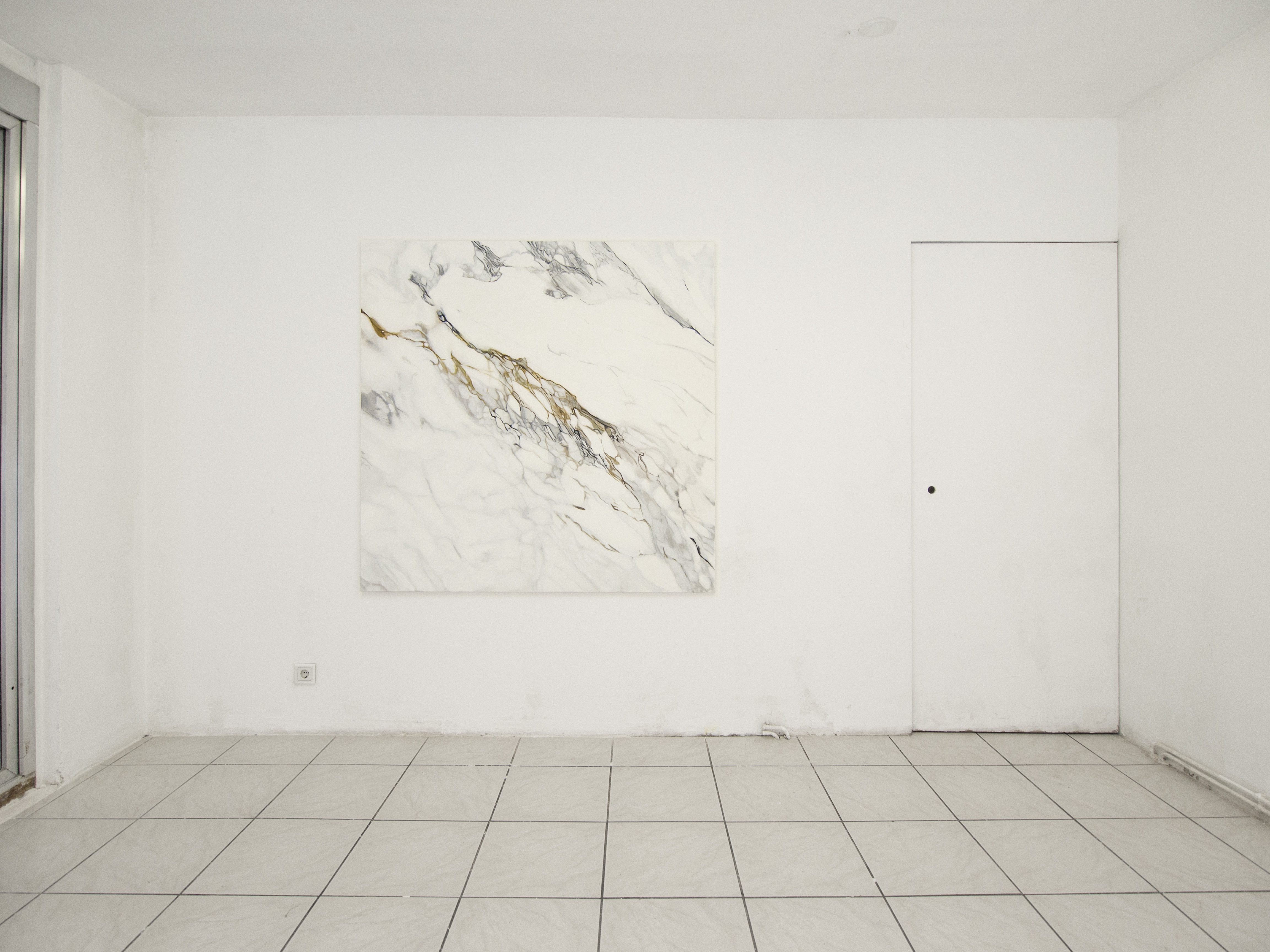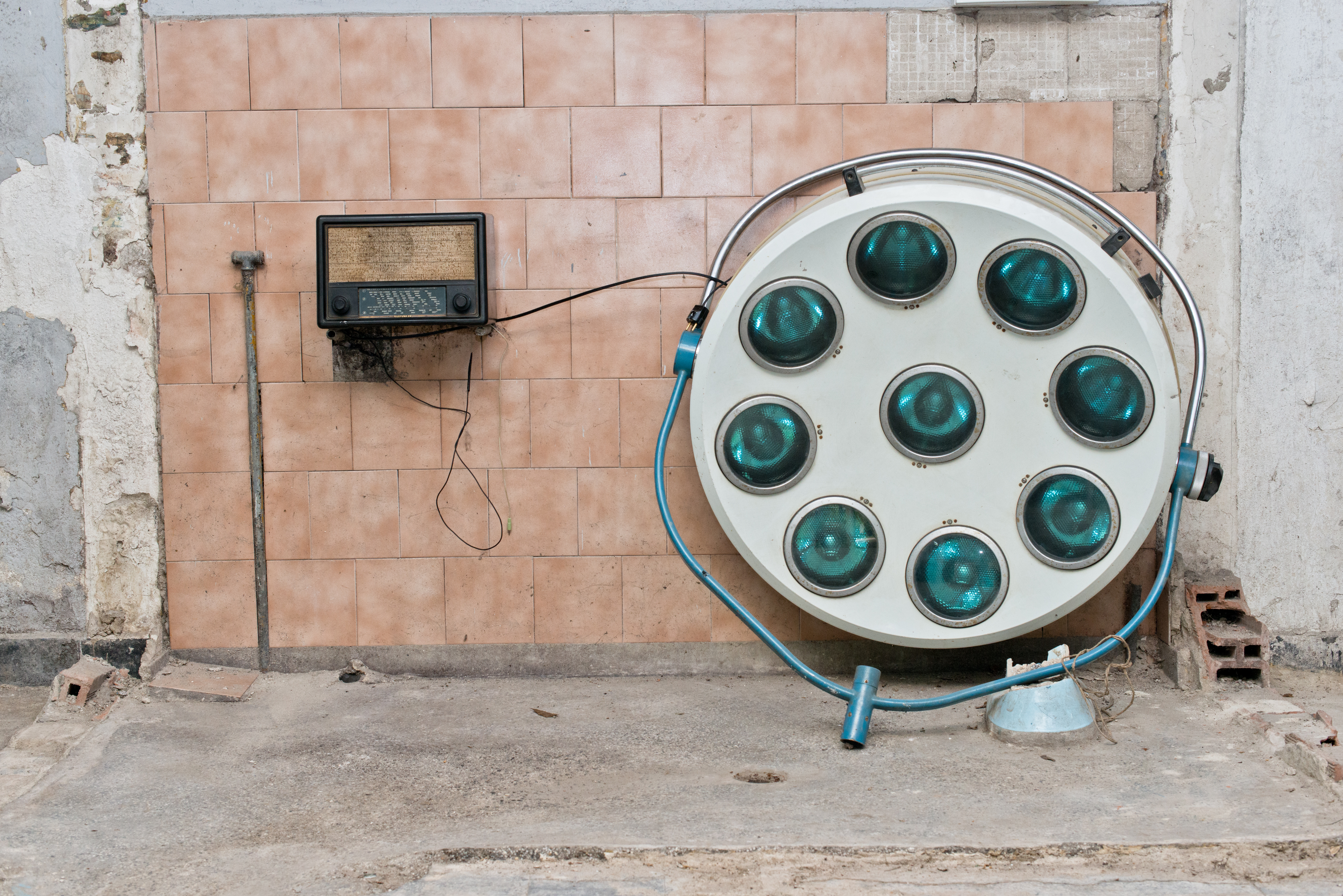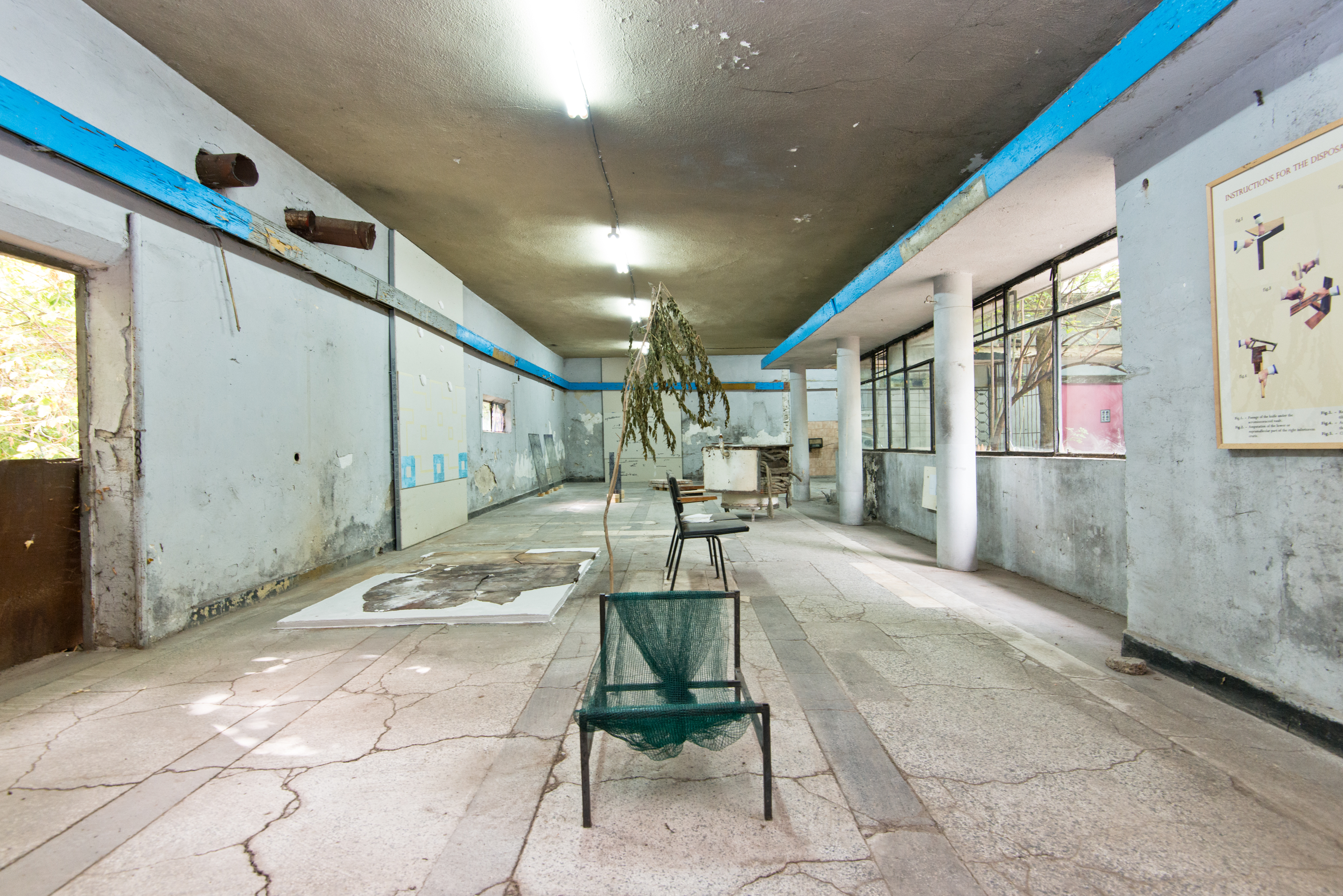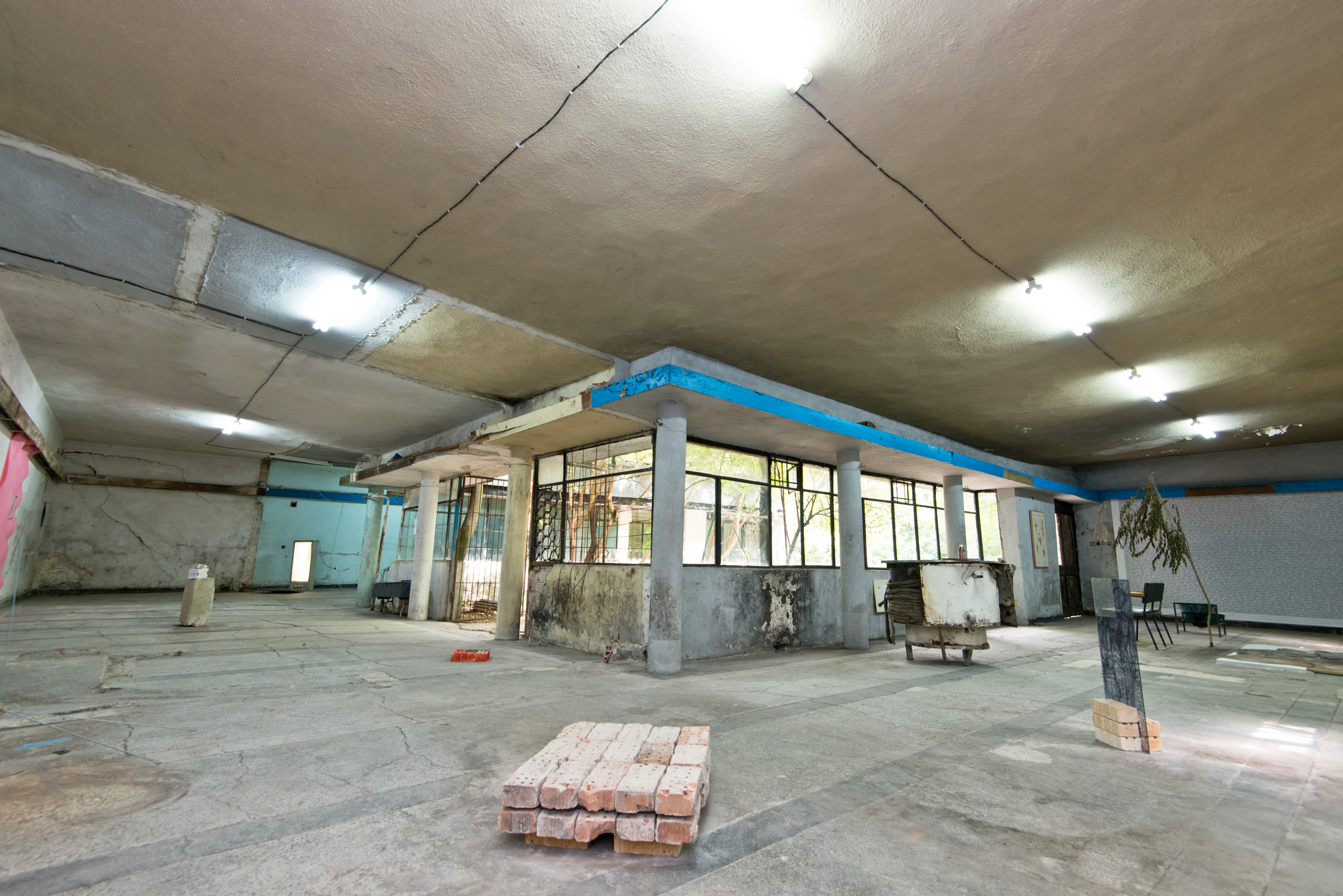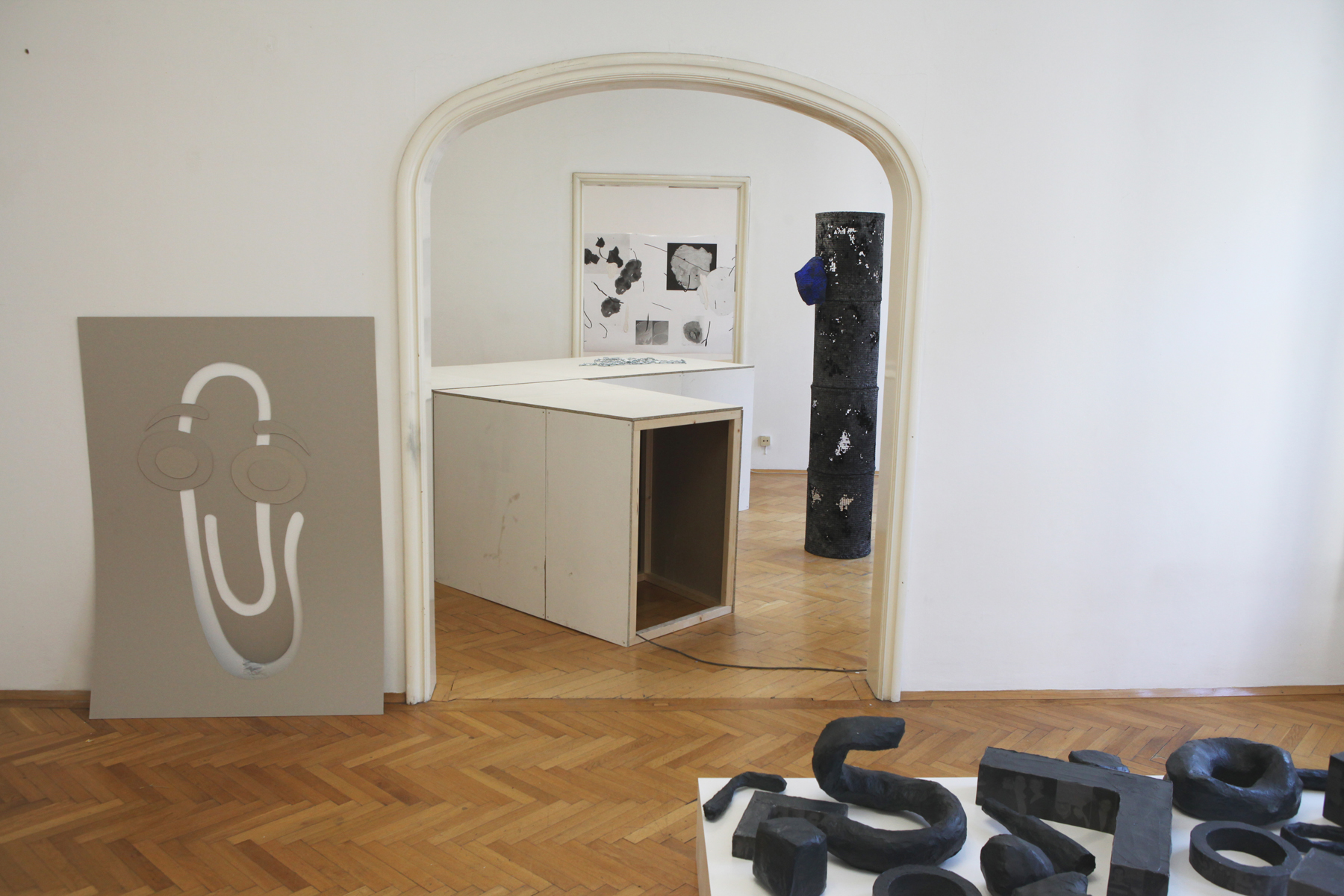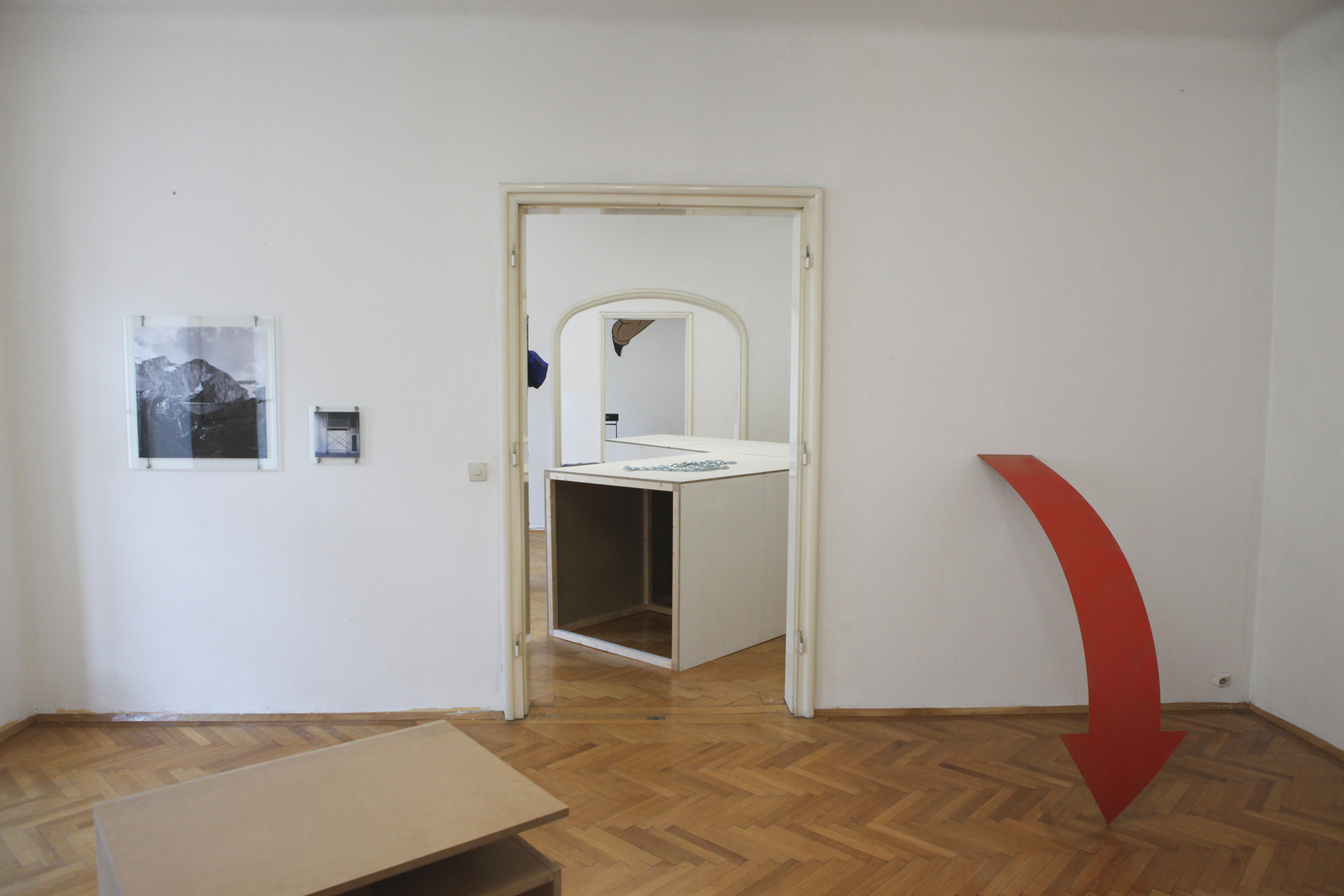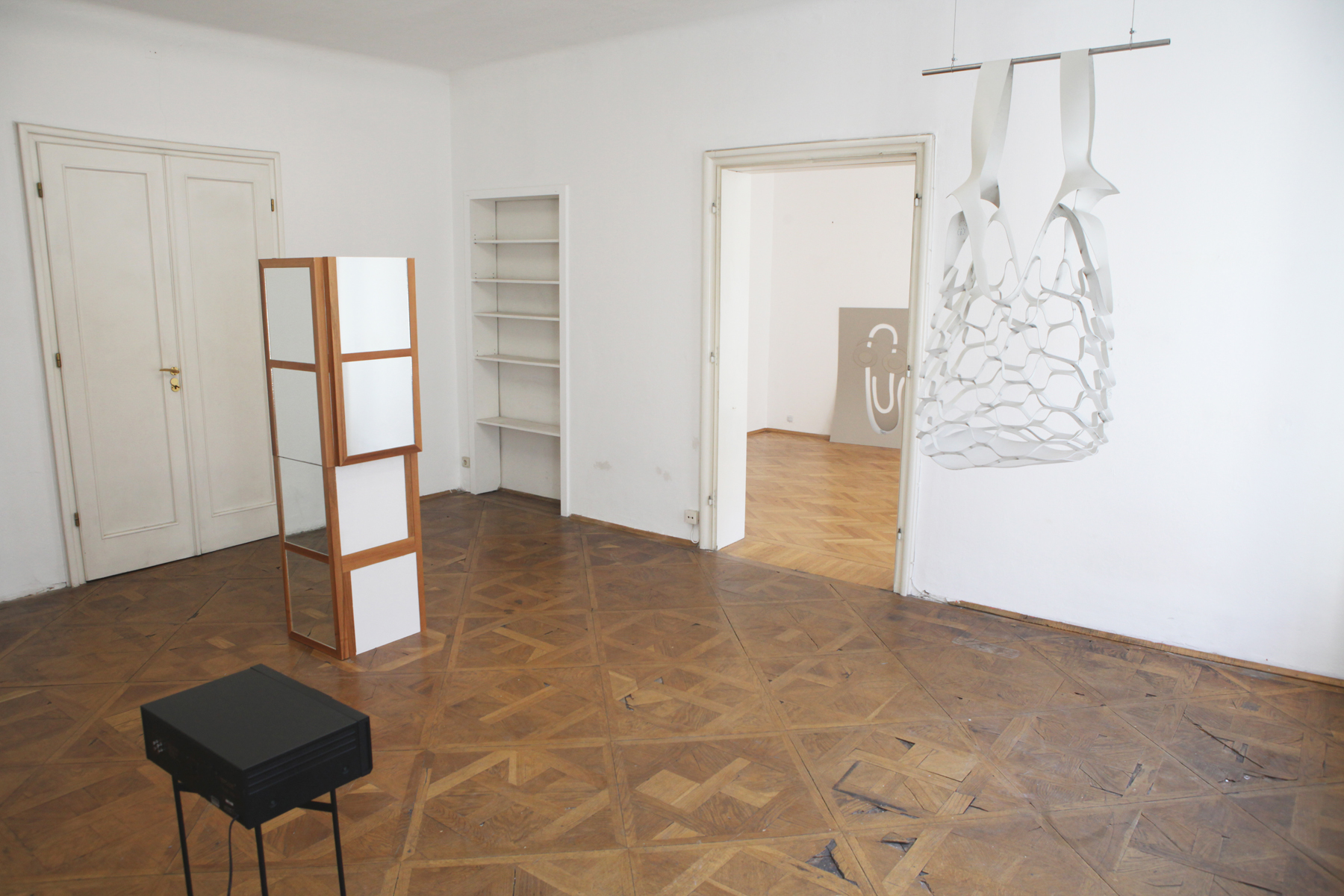New skin for the old ceremony at HECTOLITRE
Artist: Miky Kray
Venue: HECTOLITRE, Brussels
Exhibition title: New skin for the old ceremony
Date: September 15 - October 21, 2022
Exhibition text by Piero Bisello
To Tap Into Something Really, Really Critical
A puff of Miky Kray’s “New skin for the old ceremony” by Piero Bisello
His spatula brush is made to relax at the climaxes so that it prints addled mementos of the bristles.
–Parker Tyler on Pierre Soulages
This exhibition vouches for the tenet the more said the better, which I won’t follow but offer compact writing instead. I am overwhelmed but happy to see these Kray pieces at HECTOLITRE, the place where you shouldn’t show them except if you learn that Bonnard painted his canvases as they hang on flowery wallpaper.
All of these Kray works use other works, his old paintings even. Three Untitleds wrap plants and lamps with a canvas/tarp of psytrance-y horror flavor. Three references here: artists Benedikte Bjerre, Daiga Grantina, Valerie Keane. They are evident in their forms, literally: the silhouette of their works. Kray says: “The affinity of shapes is disgusting, is it not?” Yes, maybe. I am becoming convinced they have a purpose.
With this show, Kray loops inside out. Imagine deeply rigorous reflection, a proper analysis, turning fun. There is so much contemporary art in Kray’s art, and still, jollification. Take the more painterly piece (Is there more of his trashed painting here?) Spirit animals decollage: a composition that is more formal than it should be if it were to make a point, to enlighten. This is an Artland-ready, pretty picture, with animals too, which, I am told, tie to current discourses on painting.
The Internet also gets its moment of glory. Untitled (Expansion) is pixelated, and, like an early piece by net art collective Jodi, it’s about the bomb. I wonder if Kray used the rubikcubist software to interlink those painting scraps as a comment to the utmost potential cheesiness of an artwork - Invader docet. I look at it and ruminate that the digital age isn’t quite over.
What was Kray thinking when he made the spellbinding Quodlibet palimpsest, a piece that isn’t puzzling unless you wish it. Painting spaghetti hardly sticks to the surface, coming to get you by the neuron. Like actual spaghetti, a rigorous, uncooked past can be witnessed in some straight lines that cross tight. Not anymore.
The catalog of forms would not be complete (I believe Kray’s show aims at completeness) without photo and collage: They are in the same painting titled Photo collage. Comments from Contemporary Art Daily are in it too. Imagine opening the drawer of Max Ernst’s desk, soft black velvet on the bottom included, what would you find? Landscapes are not my best guess.
Untitled (YOYO) might not be the hottest ticket in town, but it best invests cultural capital into hedonism. “Alliteration, a toy, a principle of stupid repetition” says Kray. I see the piece doesn’t fail to surprise: you repeat the repetition–Indiana’s love for that matter–and something still happens. I am neither sure that the pleasure of this piece is real, nor should I wonder.
I am most baffled by the two boxes, Cornell box blow-up and Untitled (accumulation). They are so rich* it hurts, and yet, they have no tremendous presence. Can you fill something to the brink of emptiness? I am sure not.
* "Prototypes of modern art, random objects, the printed Siegelaub's 'Artist Contract’, lava lamp, Jorge Pardo and John Chamberlain (both depicted), materialism, flame, importance." I simply shuffle Kray's words here.
STURTEVANT at Atlas
Artist: Miky Kray
Venue: Atlas, Brussels
Exhibition title: STURTEVANT
Date: July 3 - August 15, 2020
Photography: Fabrice Schneider
Exhibition text:
The idea to make a show centered on Sturtevant came out of the blue. Although known to me for a long time I never fully got the point of Sturtevant’s approach. It must have been while reading an introduction to François Laruelle’s non-philosophy that the penny dropped. The concept of radical immanence reverberated immediately with Sturtevant. That felt as the missing link in all my dealing with representation, complicity and institutional critique. ‘With Sturtevant’ (derived from ‘with non-philosophy’ to be read repeatedly in the above mentioned introduction to Laruelle by Ray Brassier) I was able to think horizontally in a way that was new to me.Basically, I wanted to step into Sturtevant’s shoes. Just for some time. In a former version of this text I wrote, ‘this suggests Sturtevant’s practice as not necessarily depending on Sturtevant’s person and perpetuates questions concerning authorship on a subsequent level; Sturtevant as an axiom, as a technique.’ I did a couple of works by contemporary artists – Monika Baer, Merlin Carpenter, Olivier Foulon/Alexander Lieck, Laura Owens, Norbert Schwontkowski and R. H. Quaytman. Treated them as Sturtevants. Chose them as Sturtevants. That means I had no specific thing in mind, but an unfocused gaze that halted when something resonated, affiliated.
Later on, I started inside jokes. I did David Hammons’s Flag, reacting to Sturtevant’s Johns Flag. I had learned more about Sturtevant’s life (mainly through Bruce Hainley’s book). Sturtevant questioned reality, and the term ‘Individual Mythologies’ bore entirely new meaning to me. Asked about the fact people kept emphasizing Sturtevant would be a female artist Sturtevant used to reply – ‘that’s medieval.’ Gendernormativity is a primal decision, Sturtevant resisted non-philosophically. Therefore, it was necessary to reject being pinned down to gender, nevertheless, Sturtevant’s works ‘deal with identity.’ (Sturtevant ‘uses the immanence of the real to de-specularize those objects which philosophy cocoons in its reflexive transcendence.’) Sturtevant had a feminist attitude in the way concepts of identity were questioned, foremost the one of the artist. To me, the genesis of Sturtevant’s practice seems to be strongly informed by the establishment of the artist as role model. Sturtevant presented this role model as non-binary.
To bring in K-HOLE was both a way of addressing contemporary role-modelling and pushing further horizontally. To fathom the impossible complicity of radical immanence with the collapse of subject and object. To me, this characterizes the tension between Sturtevant’s paintings/objects and Sturtevant’s later work of video/collage. Ironically, one could describe Sturtevant as Normcore avant la lettre. But in fact, the opposite is true. ‘With Sturtevant’ dilutes with the loss of distinction between subjects and objects. Normcore, however, sees this as an opportunity for connection and enhancement. Sturtevant kept a relationship with each individual artwork, Normcore means a maxed out multiplicity of relationships. Ultimately, Normcore is just another way of reification. Sturtevant used structures of reification as artistic material. Isn’t that the reason Sturtevant was dismissed as copyist and obstructionist by so many people?!
Miky Kray, Brussels, June 2020
Virtual Virtue at FRANZ JOSEFS KAI 3
Artists: Miky Kray, Hong Zeiss
Venue: FRANZ JOSEFS KAI 3, Vienna
Exhibition Title: Virtual Virtue
Curated by: Gudrun Ingenthron
Date: May 24 - June 15, 2018
Photography: kunst-dokumentation.com
Press release: Virtual Virtue is an exhibition about painting. Painting as more than painting but also painting as just painting, as a medium that confines in itself the means for its own transcendence.
The title suggests a connection between virtue and virtuality that only at a very first glance could sound improbable. Winking an eye to the historical relations between virtuosity and the constructedness of the medium painting, this exhibition reclaims the legitimacy of mastering a pictorial language in order to address from within it the net of semiological relations firstly denounced by the etymological path between virtue, connected with moral values and inherent natural qualities, to virtuality as something existing in essence or effect, though not actually or in fact.
The strategies elected by the two painters to approach this virtual virtue are different. If Hong Zeiss pushes ambiguity to its limits to turn his paintings into reflections about singularity or seriality, about medium of format, Miky Kray uses a reflection on the ability of (digital) image production to bypass its constructedness as a mirror to addresses the (opposite) dual property of painting, as the medium that allows, precisely for its undeniable and unavoidable factitiousness, for both modes of virtue/virtual to be simultaneously present.
The exhibition space and context create a dispositif (1) in which the idiosyncratic pictorial treaties of Zeiss and Kray are dismantled and subsequently reassembled, creating multidirectional communication possibilities and within them new hypothesis situated in serial affinities and/or in the vicinities of their works.
Ingenthton’s intervention on Virtual Virtue unfolds as an answer to the dialogue that the works of Hong Zeiss and Miky Kray propose through the development of the concept of Immanent Critique. This concept, developed in conversation between the artists seeks to situate critique within the artistic piece and not beyond. That is, in the work of art there is always -or at least could be- the possibility for a self-reflection of the nature of the work itself, its possibilities and limitations, its boundaries and extensions.
In this sense, the paintings by Zeiss and Kray refuse the contemporary temptation to “revitalize painting”, that is, to engage in a form of pictorial production intended to renew the possibilities of painting or even to defend its role and validity amidst an inter and trans-medial art production. Instead of trying to refuse tradition as a statement towards “contemporaneity” or even “criticality”, their works selected for Virtual Virtue engage consciously with tradition by reframing it. Their approach to painting reveals itself as always related to an outside and in this sense the level of significance in which their discourse unfolds appeals more to the realm of desire than that of the sensible.
Text by Ana de Almeida
1) Dispositiv is understood as an arrangement, coming from the French word dispositif that, just as the Portuguese or Spanish dispositivo relates to the latin dispositio - a system used in Western classical rhetoric for the organization of arguments.
Vergänglichkeit, privat, mit Kätzchen. at Christian Leis
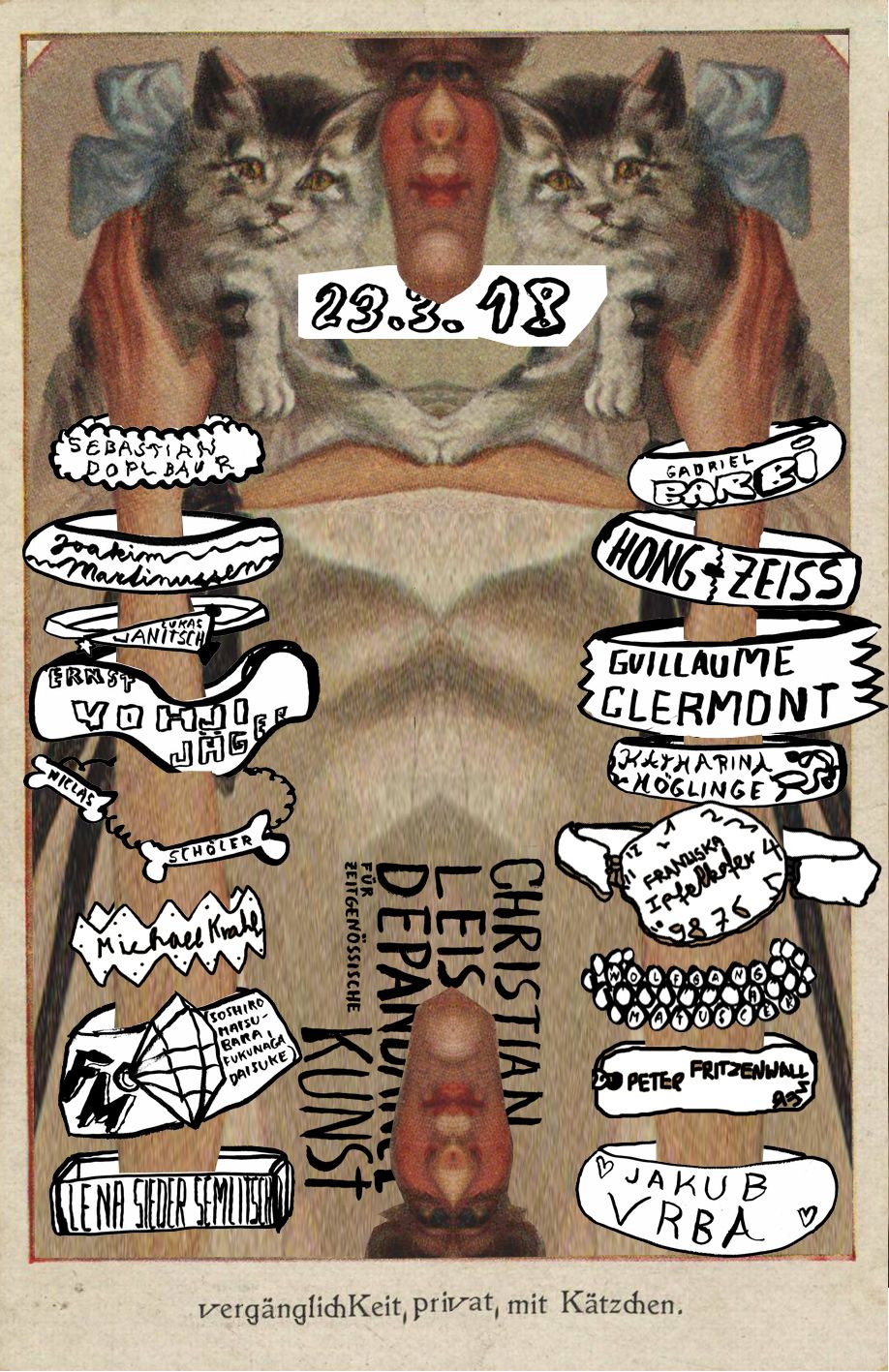
Artists: Gabriel Barbi, Guillaume Clermont, Sebastian Doplbaur, Peter Fritzenwallner, FM (Fukunaga Daisuke, Soshiro Matsubara), Katharina Höglinger, Franziska Ipfelkofer, Lukas Janitsch, Ernst Yohji Jäger, Miky Kray, Joakim Martinussen, Wolfgang Matuschek, Niklas Schöler, Lena Sieder Semlitsch, Jakub Vrba, Hong Zeiss
Venue: Christian Leis, Department für zeitgenössische Kunst, Vienna
Exhibition Title: Vergänglichkeit, privat, mit Kätzchen
Opening: March 23, 2018
Trois Tableaux at n.w.w.n.n.l.n.o.
Artists: Miky Kray, Jakub Vrba, Hong Zeiss
Venue: n.w.w.n.n.l.n.o. (no white walls, no neon lights, no opening), Brussels
Exhibition Title: Trois Tableaux
On invitation by: Guillaume Clermont
Opening: Dec 8, 2017
Madame at Justice
Artists: Andrea Friesacher, Ernst Yohji Jäger, Florma( Flora Lechner, Norma Kiskan), FM (Fukunaga Daisuke, Soshiro Matsubara), Hong Zeiss, Jakub Vrba, Johanna Binder, Katharina Höglinger, Lena Sieder Semlitsch, Maximilian Anelli-Monti, Moritz Pisk, Wolfgang Matuschek
Venue: Justice, Vienna
Exhibition Title: Madame
Curated by: Ernst Yohji Jäger & Hong Zeiss, supported by Ilse Lafer
Opening: Nov 13, 2017
Still in Business at le casier
Artist: Miky Kray
Venue: Le Casier (at Ecole de recherche graphique), Brussels
Exhibition Title: Still in Business
Curated by/Exhibition display: Guillaume Clermont
Opening: Nov 6, 2017
The Happy Fainting of Painting #2 curated by_Hans Jürgen Hafner & Gunter Reski at Krobath
Artists: Art & Language, Olga Balema, Josef Bauer, Tim Berresheim, Lutz Braun, Sabeth Buchmann & Hong Zeiss, HC Dany, Helmut Draxler, Heinrich Dunst, Christian Egger, Fabian Ginsberg, Ellen Gronemeyer, Hans-Jürgen Hafner, Rosa Hausleithner, Stefan Hayn, Christian Höller, Elke Silvia Krystufek, Claudia Kugler, Ulrich Lamsfuss, Christine Lemke, Birgit Megerle, Anna Meyer, Ariane Müller, Robert Müller, Vanessa Joan Müller, Kito Nedo, Chris Reinecke, Berthold Reiss, Gunter Reski, Pieter Schoolwerth, Lin May Saeed, Avery Singer, Dominik Sittig, Paul Sochacki, Catharina Szonn, Anke Völk, Marcus Weber, Claudia Zweifel
Venue: Galerie Krobath, Vienna
Exhibition Title: The Happy Fainting of Painting #2 curated by_Hans Jürgen Hafner & Gunter Reski
Curated by/Exhibition display: Hans Jürgen Hafner & Gunter Reski
Opening: Sept 14, 2017
Two paintings walk into a bar. One says... at Super
Artists: Konrad Krcal, Jakub Vrba, Hong Zeiss
Venue: Kunstraum Super, Vienna
Exhibition Title: Two paintings walk into a bar. One says...
Opening: June 23, 2017
Parallax
Artists: Brishty Alam, Minda Andren, Josefin Arnell, Taschko Deliyski, Marc Alex Dumoulin, Jennifer Gelardo, Benjamin Grodin, Jessyca R. Hauser, Lukas Heistinger, Alexander Jackson Wyatt, Ludwig Kittinger, Galya Krumova, Pencho Leshtarov, Omri Livne, Phelim McConigly, Billie Meskens, Fernando Mesquita, David Muth, Flavio Palasciano, David Peschka, Ivo Petrov, James Swift, Hong Zeiss, Julia Znoj
Venue: Medical Museum, Uni Hospital Georgi Stranski, Pleven, Bulgaria
Exhibition Title: Parallax
Curated by: Phelim McConigly
Opening: Sept 08, 2016
Tradebot family
February 11th, 2016Ei Ei Kyaw, Gabriel Barbi, Henning Lundkvist
Artists: Ei Ei Kyaw, Gabriel Barbi, Henning Lundkvist
Venue: Costa do Castelo 85 1CV E, Lisbon
Date: May 20, 2015
Peer Generali at Generali Foundation
Venue: Generali Foundation, Vienna
Exhibition Title: Peer Generali
Curated by: Miky Kray, Hong Zeiss
Technical support: Andreas Perkmann Berger, Clemens Waldhuber
Peer at AHM
Artists: Elisabeth Greinecker, Anna Holtz, Miky Kray, Emanuel Mauthe, Lucia Elena Prusa, Christian Ruchnewitz, Julia Wallisch, Hong Zeiss
Venue: AHM, Vienna
Exhibition Title: Peer
Date: Sept 03 – 06, 2013
Miky Kray, filmingintheartspace.mp4, single channel, sound, color, 5:34 min
Peer Production at Grita Insam
Artists: Miky Kray, Hong Zeiss
Venue: Grita Insam, Vienna
Exhibition Title: Peer Production
Date: October 4 – 11, 2012


